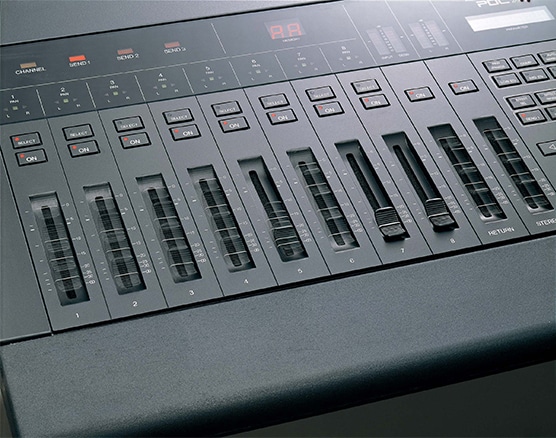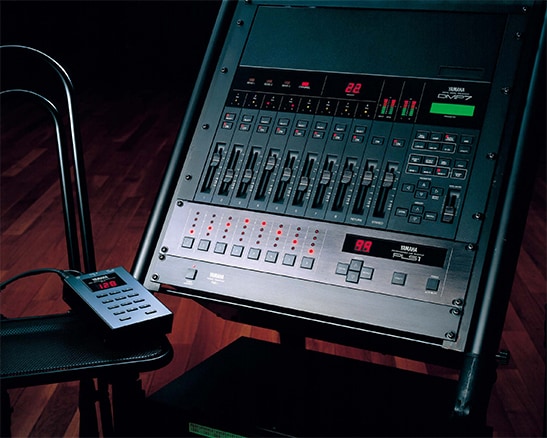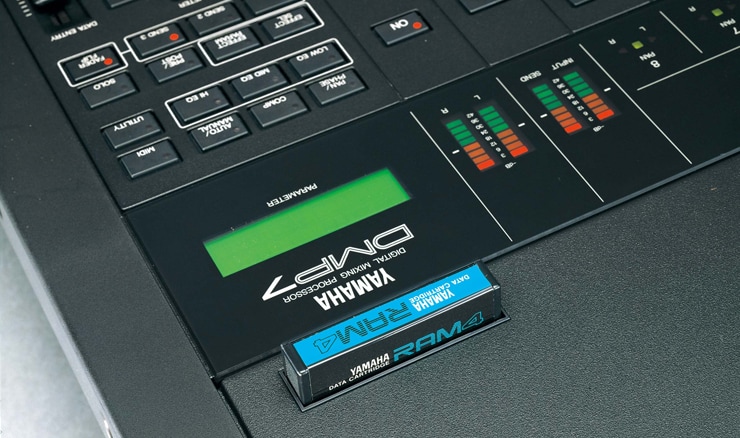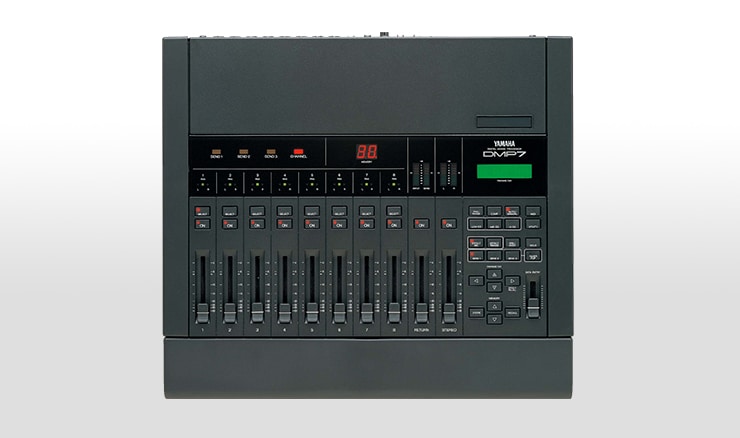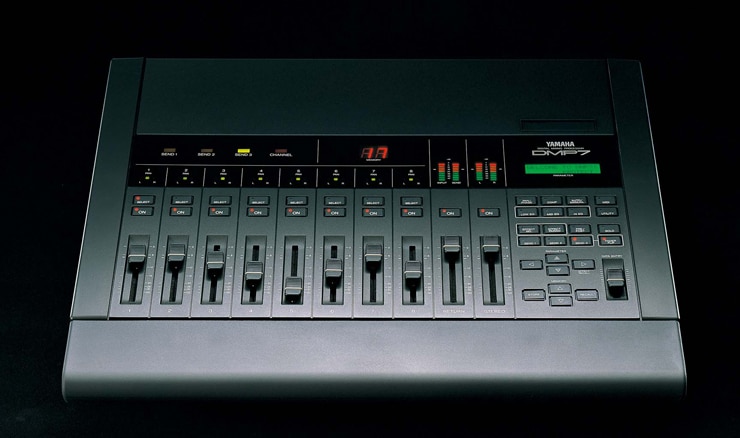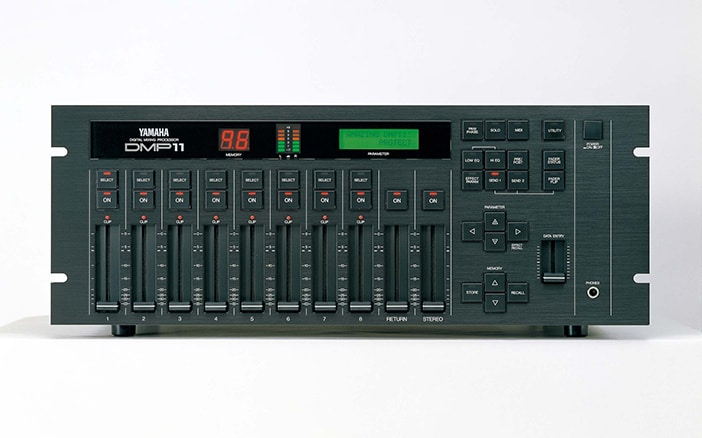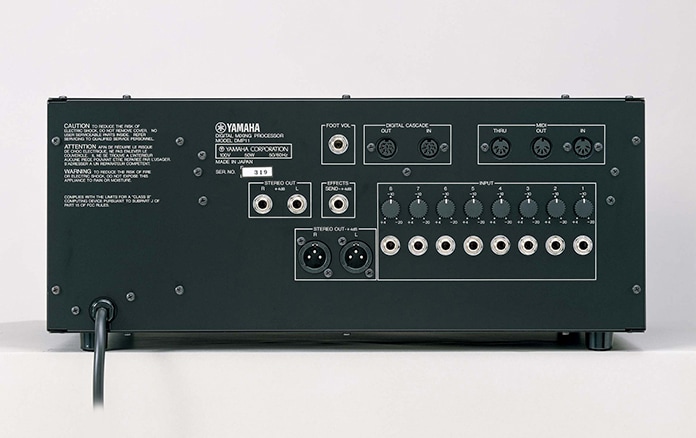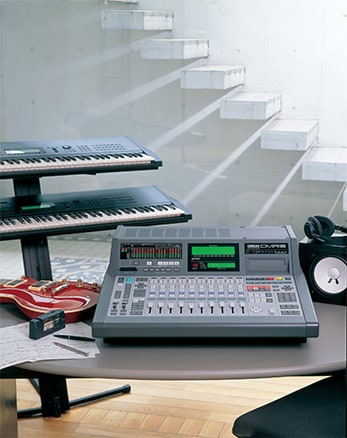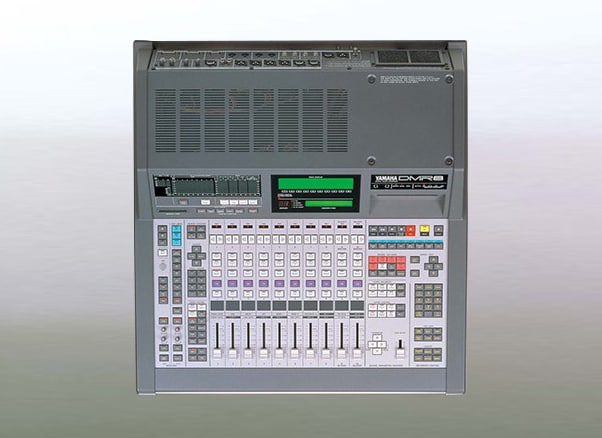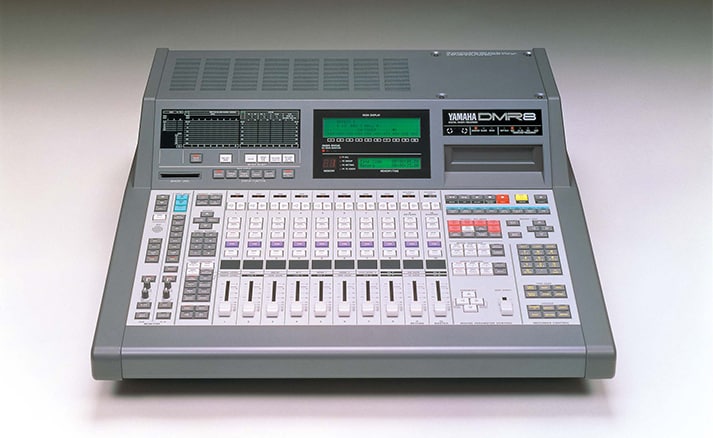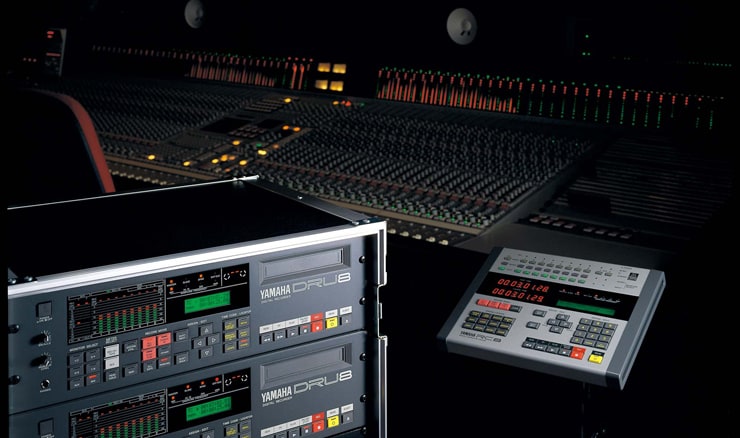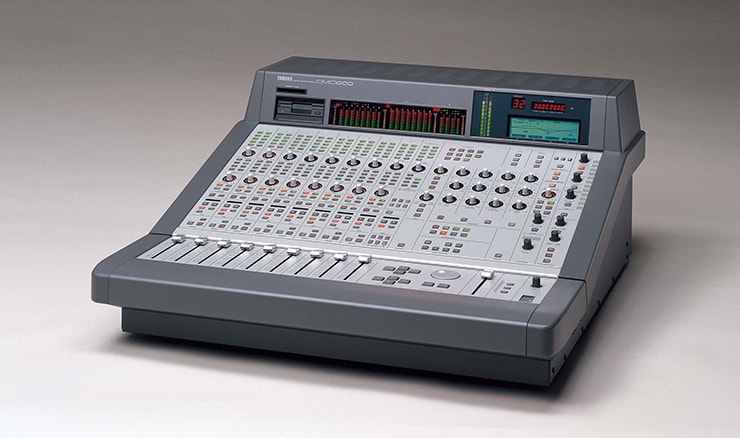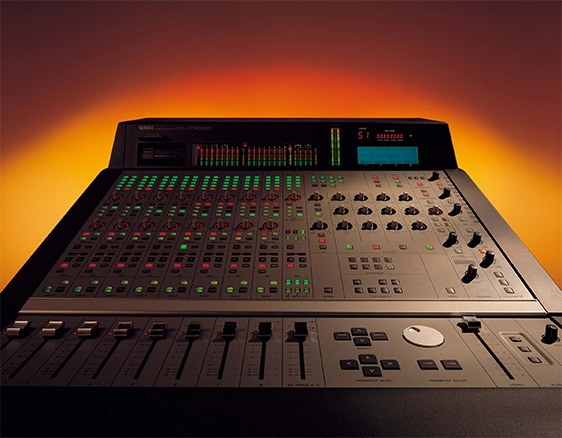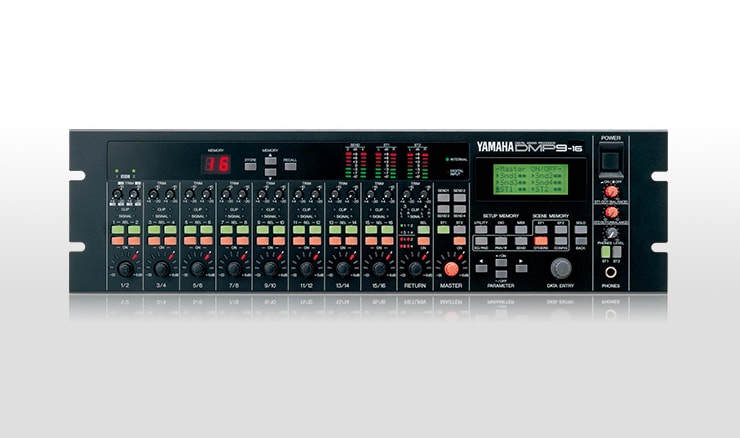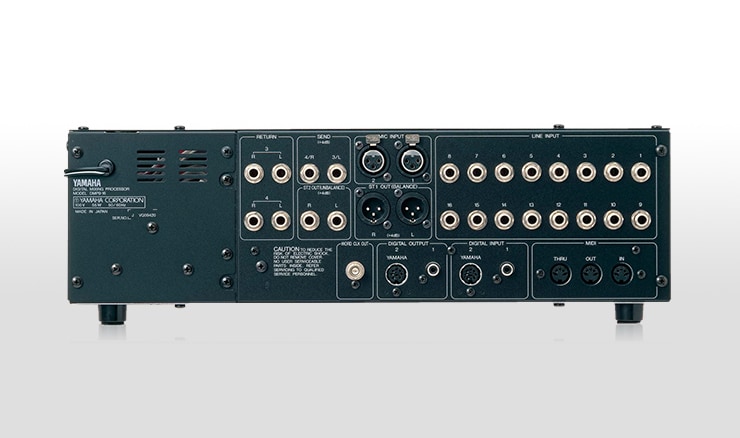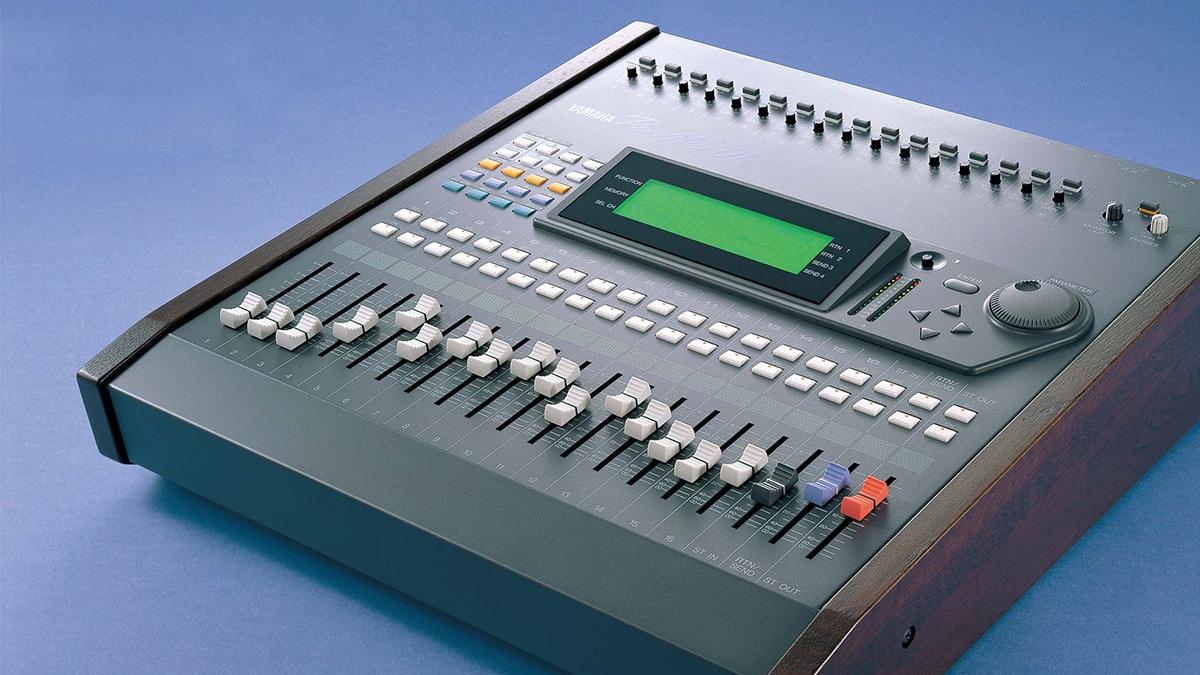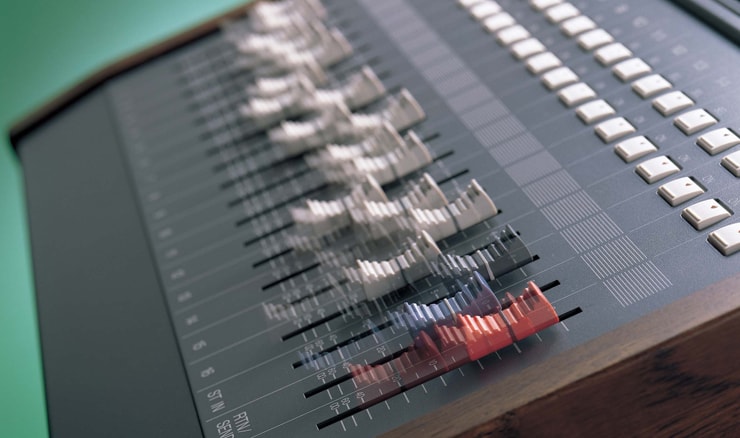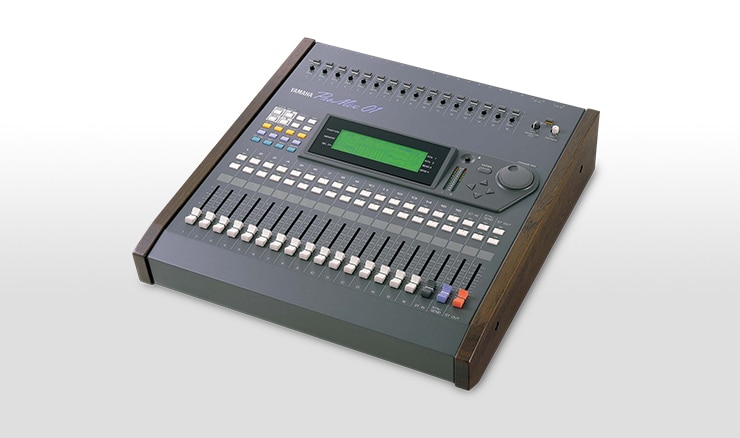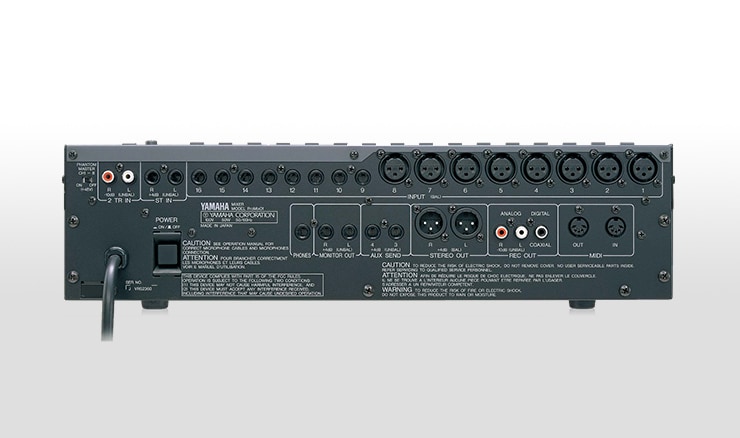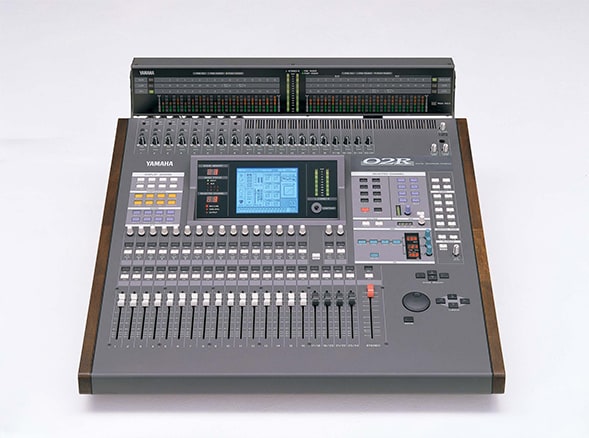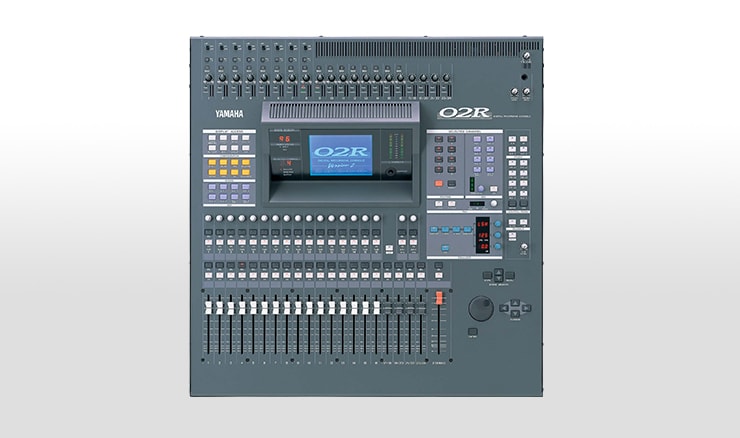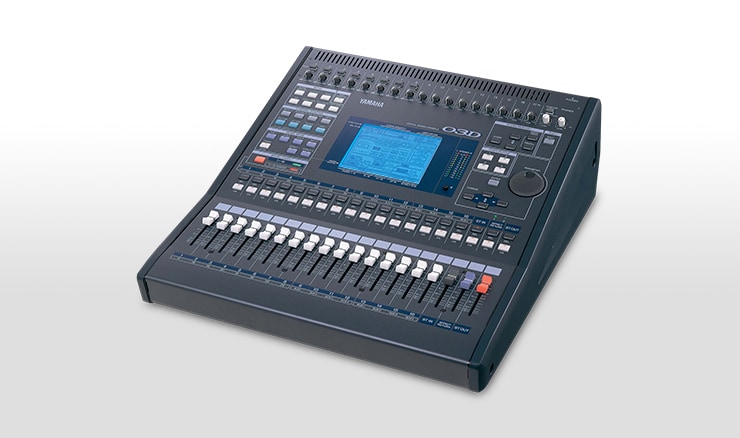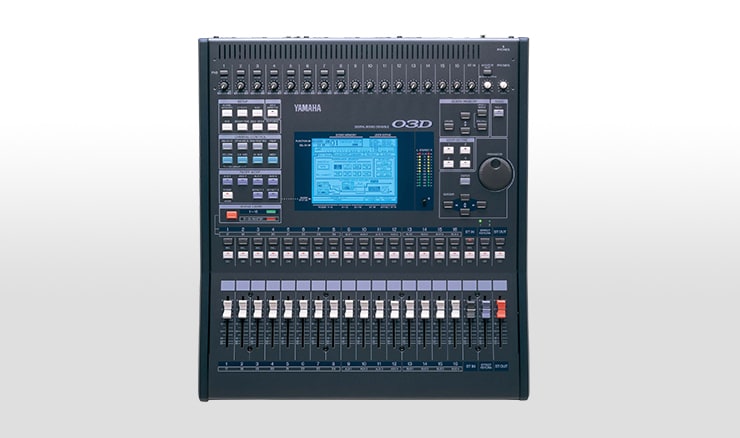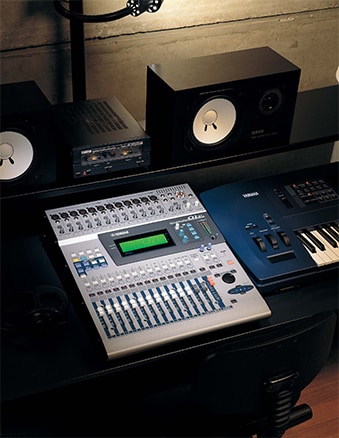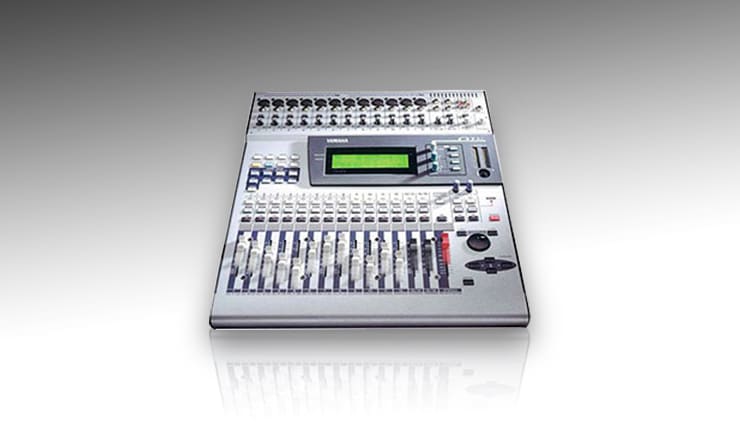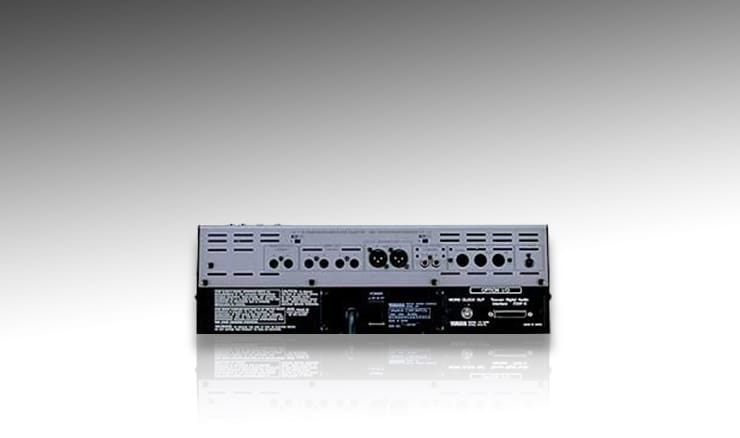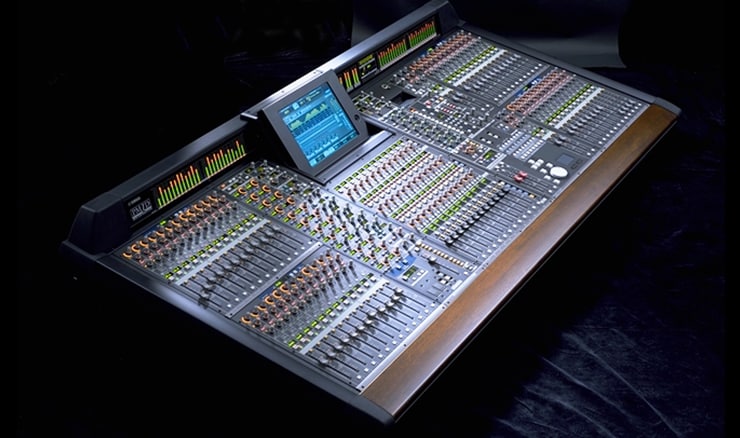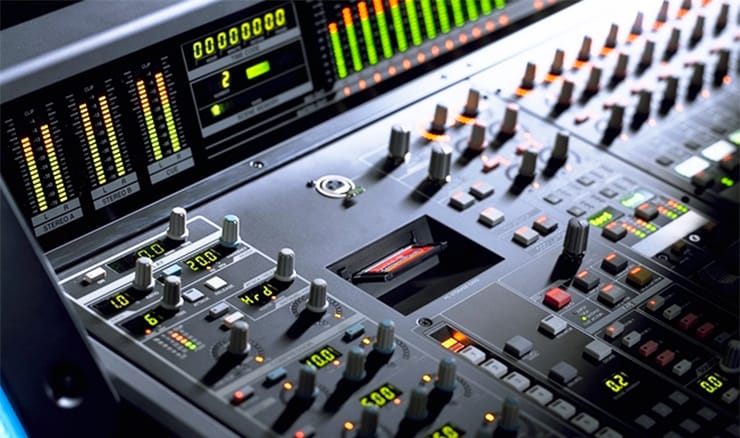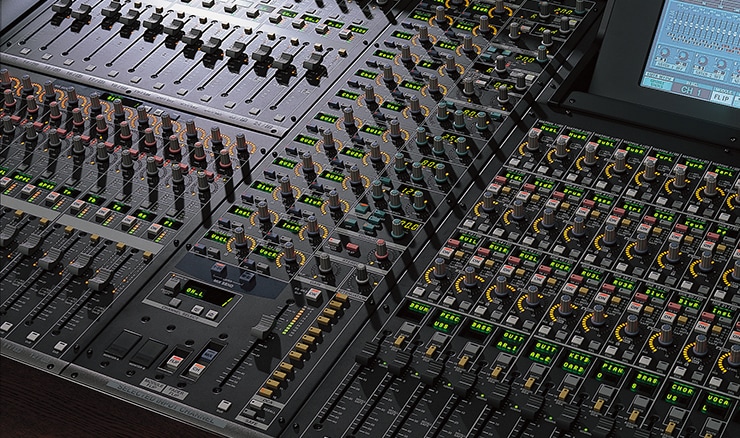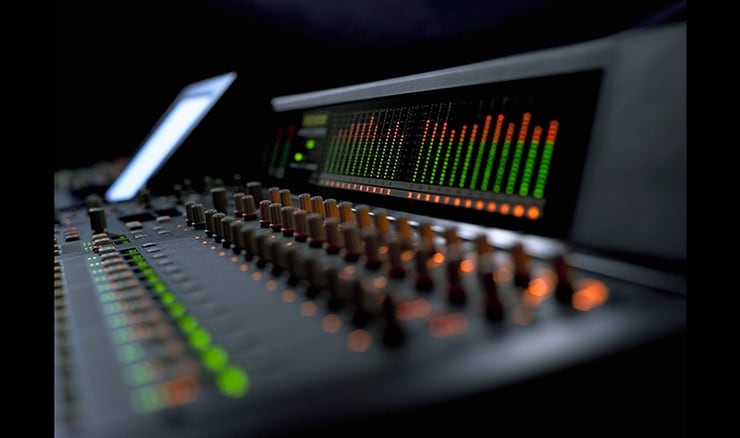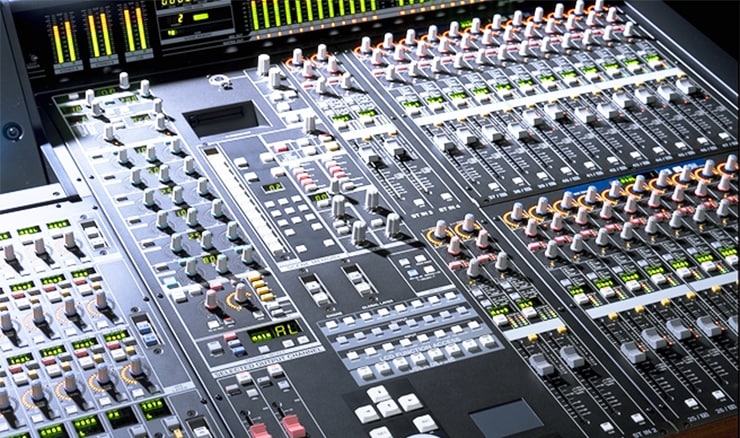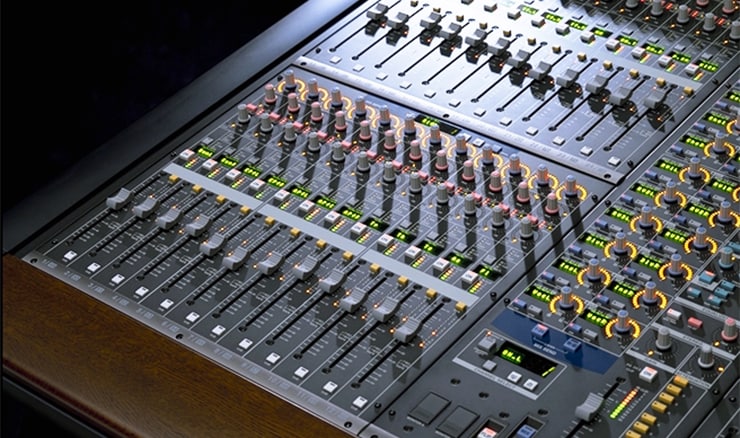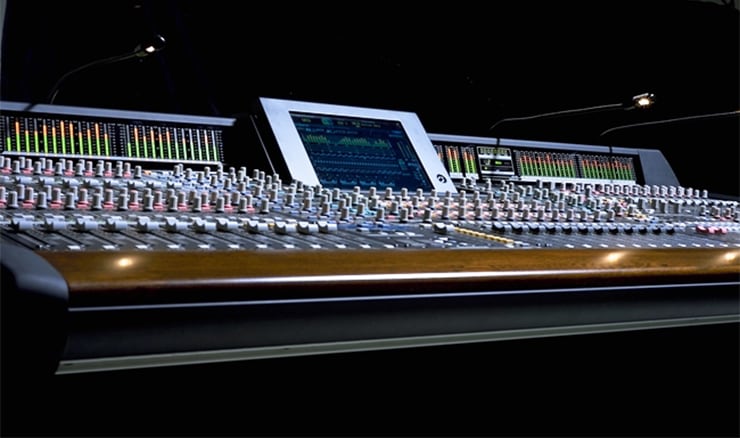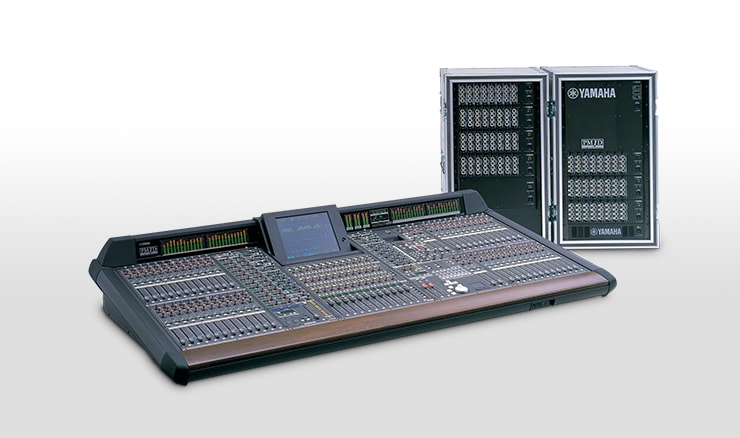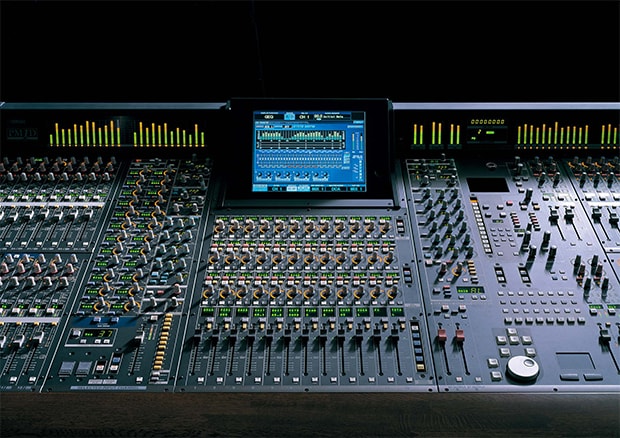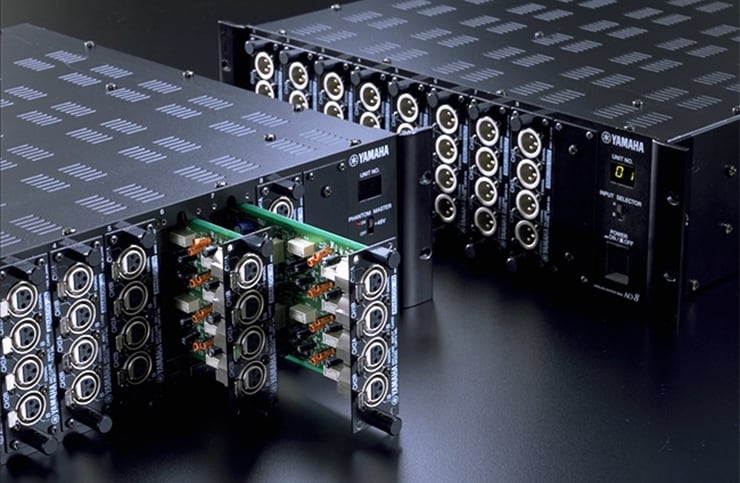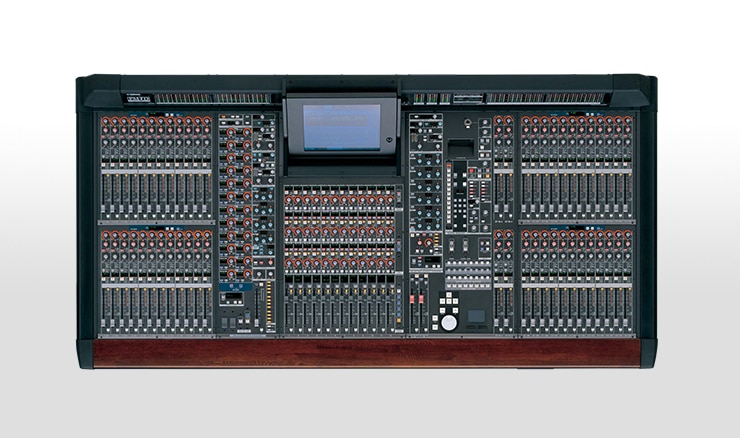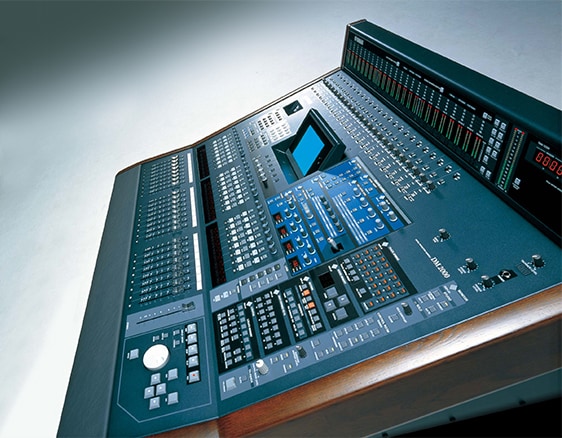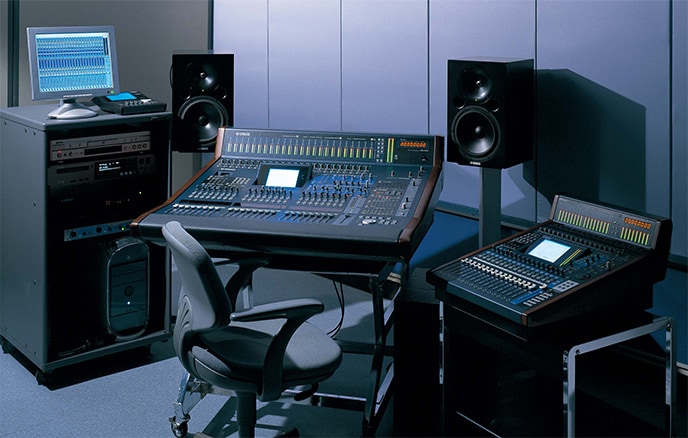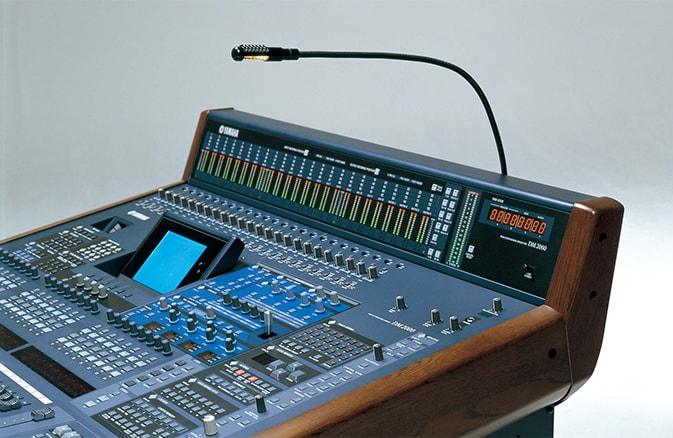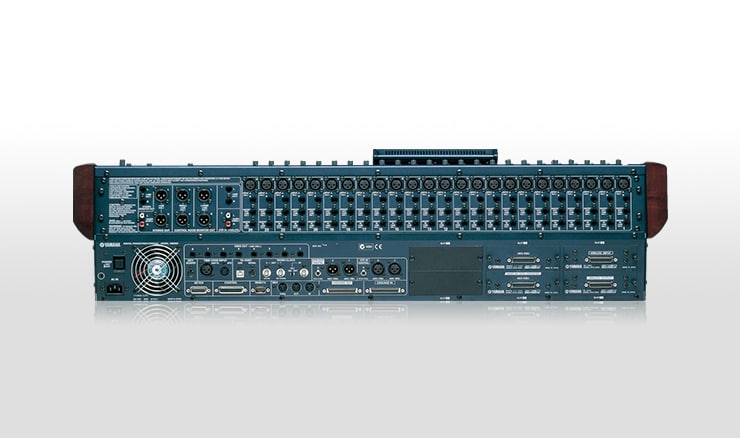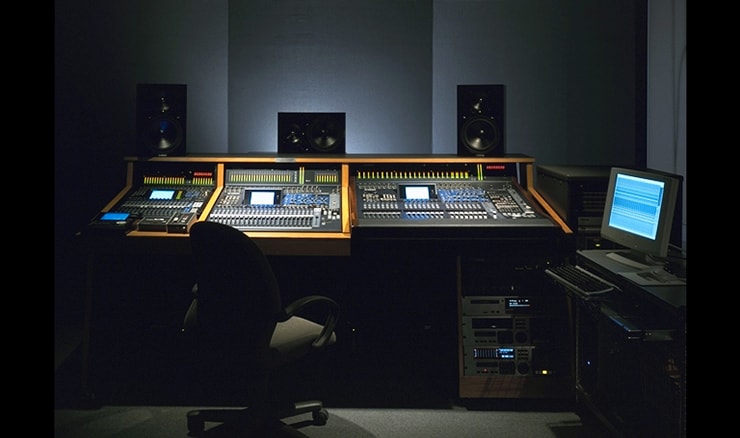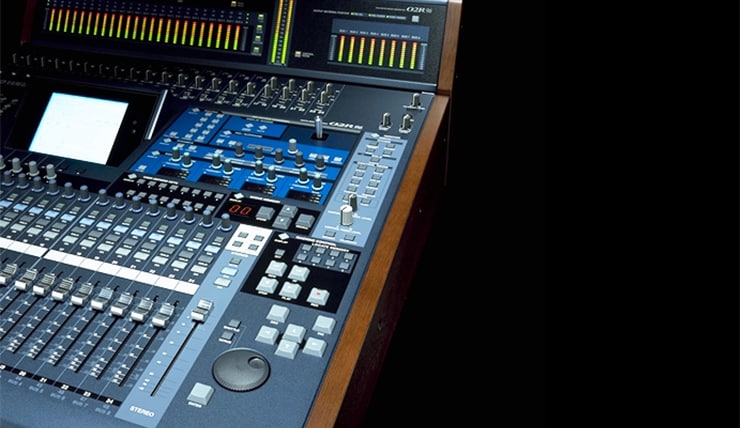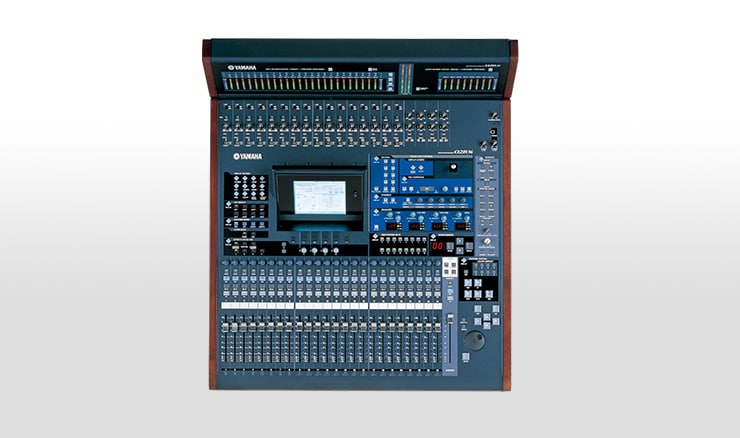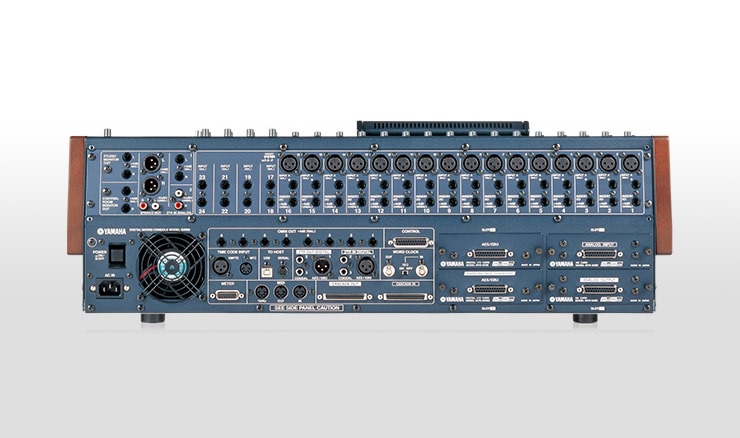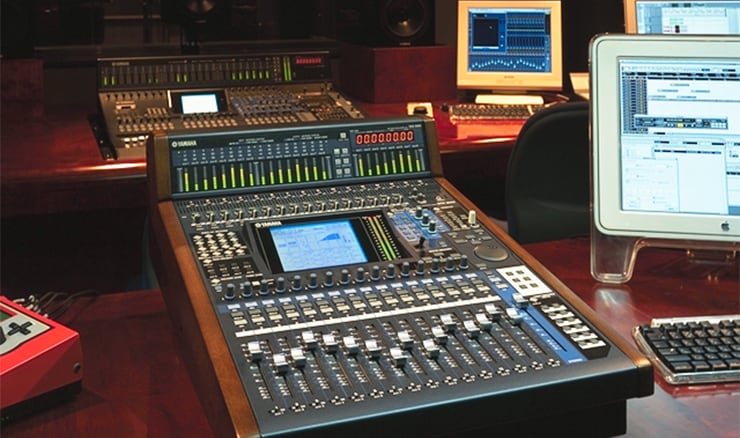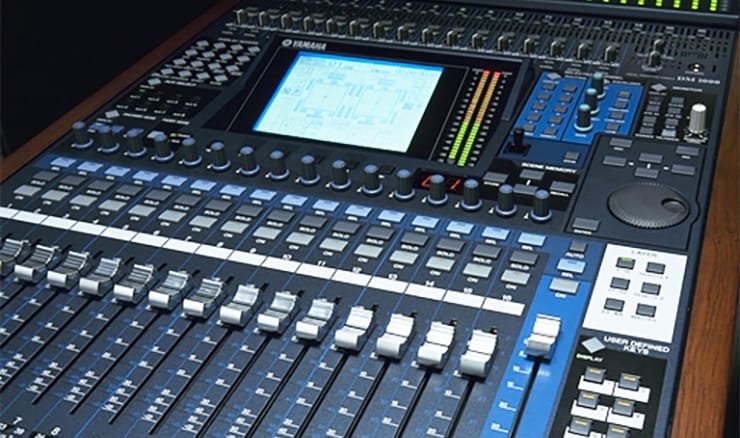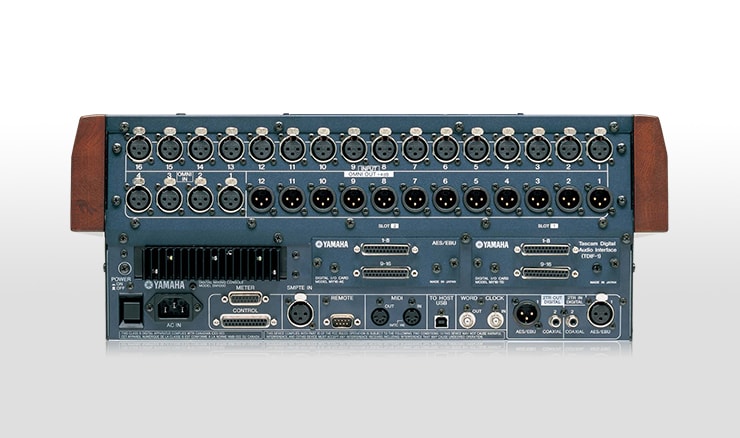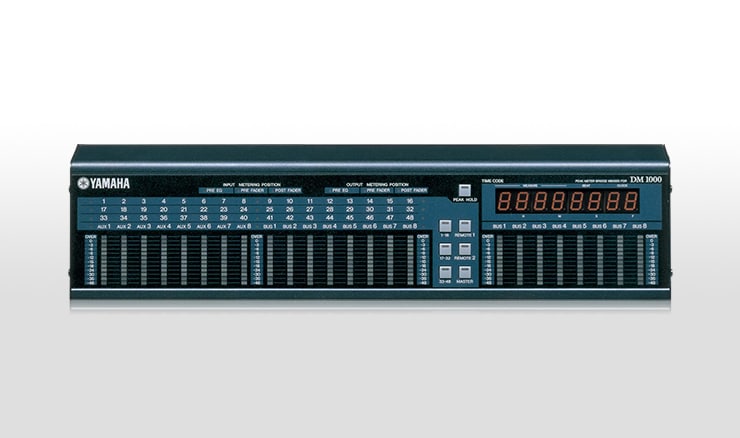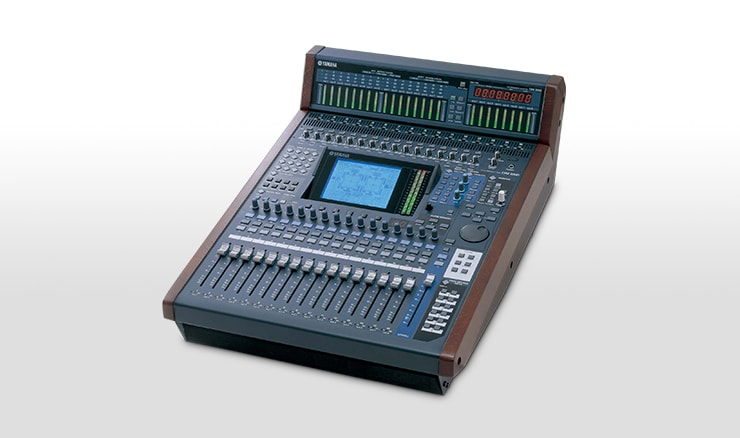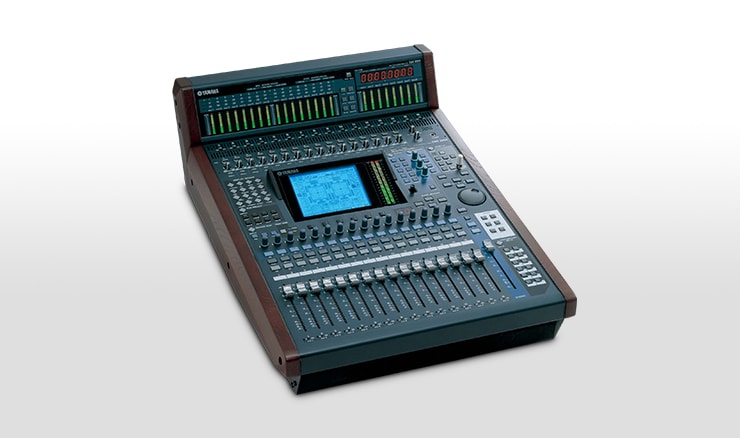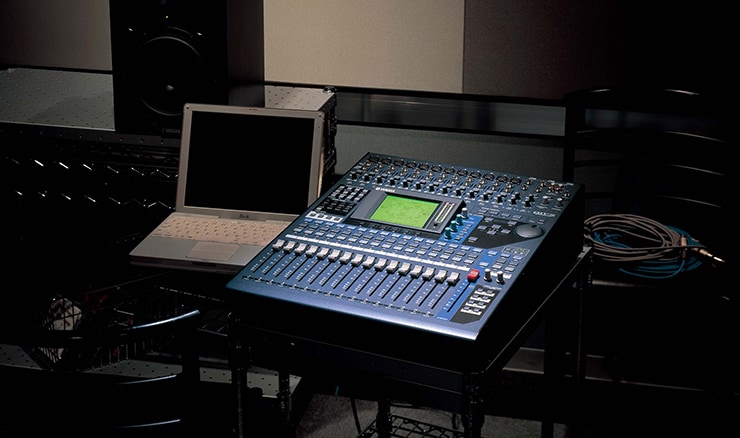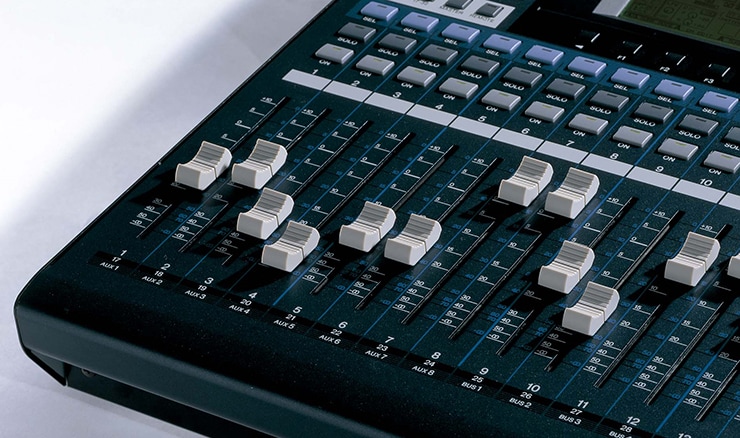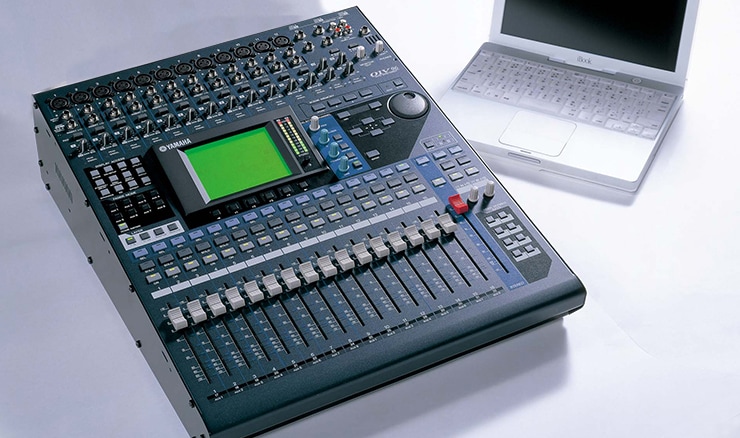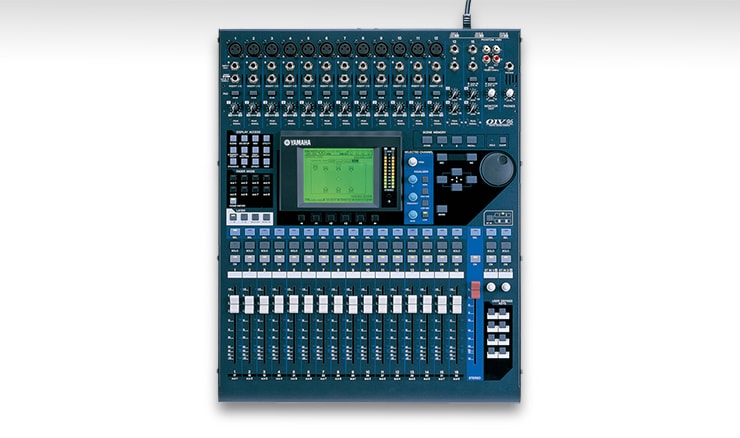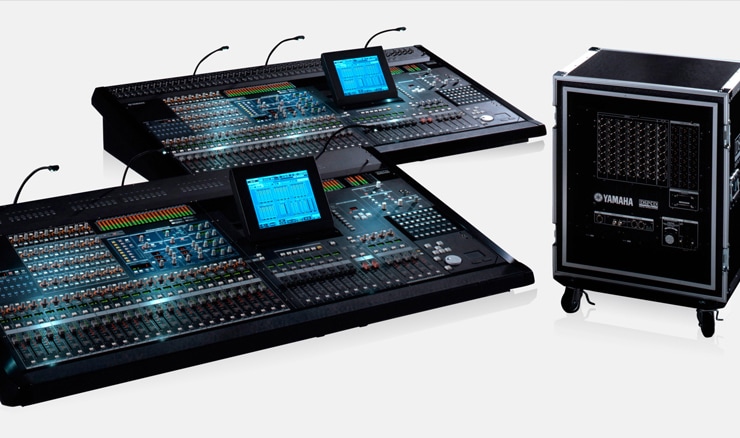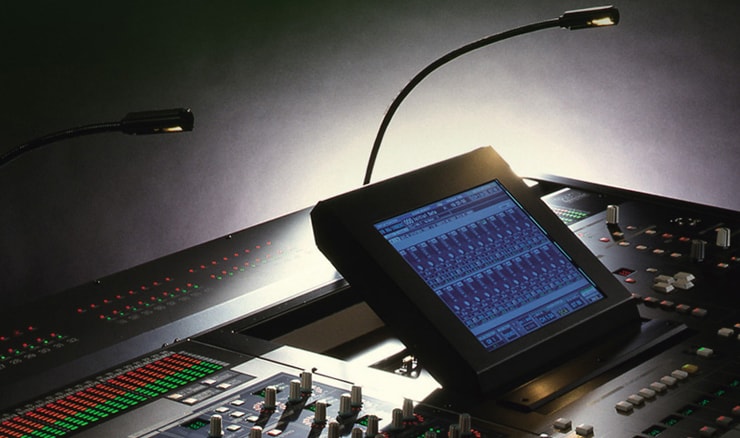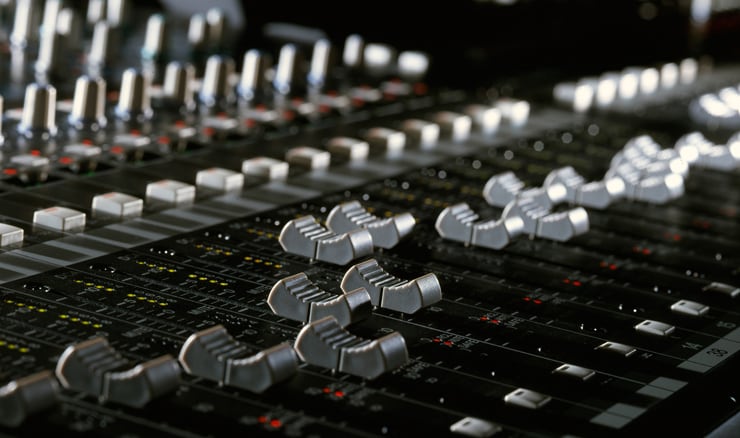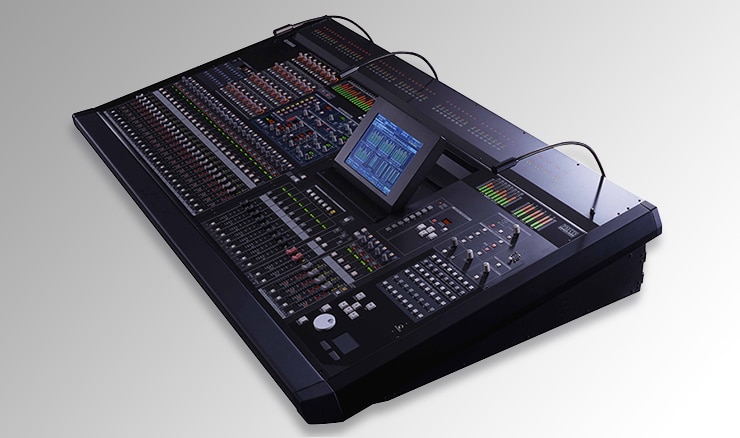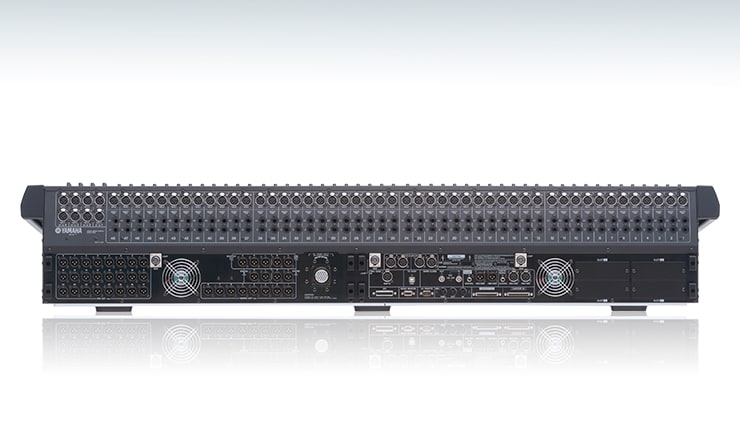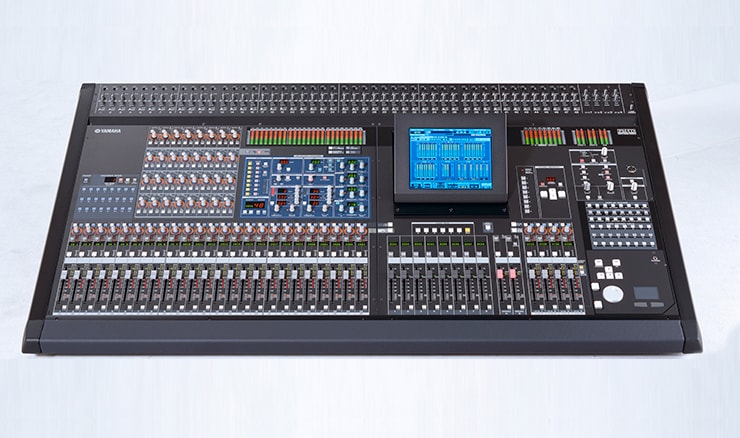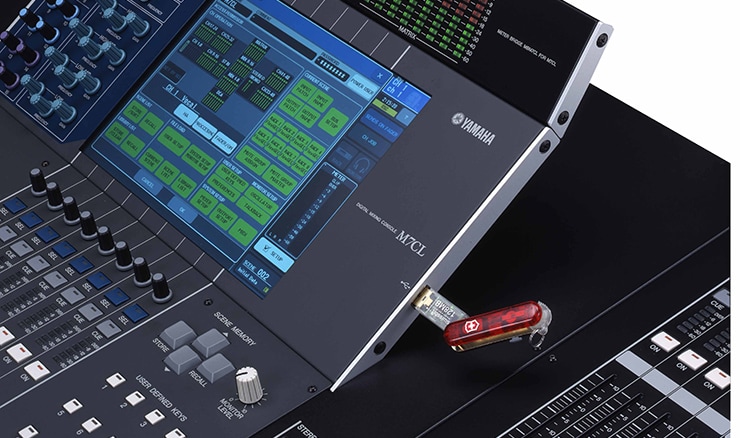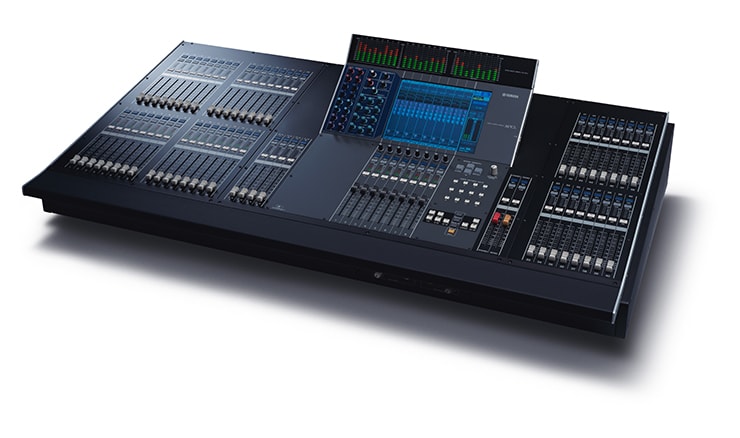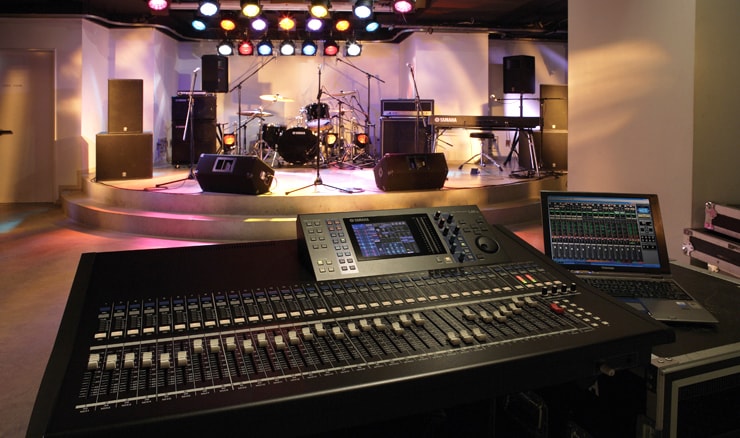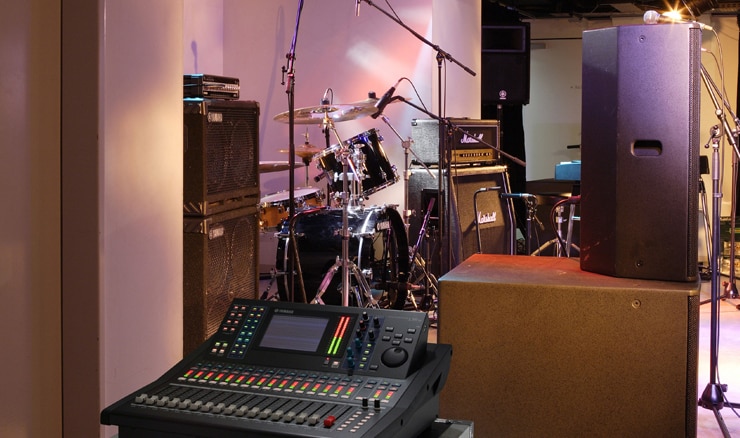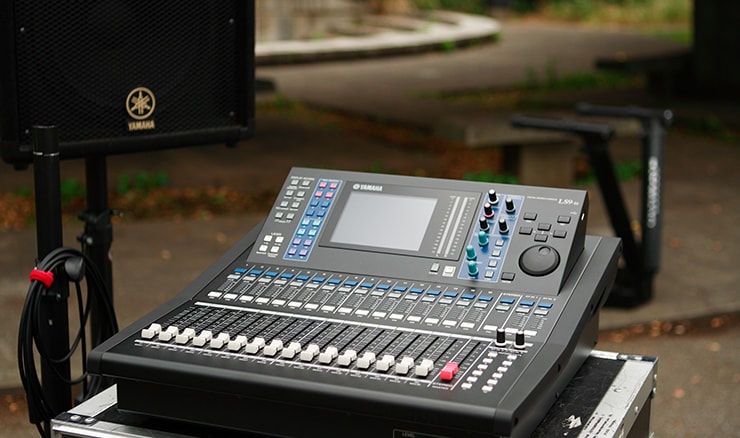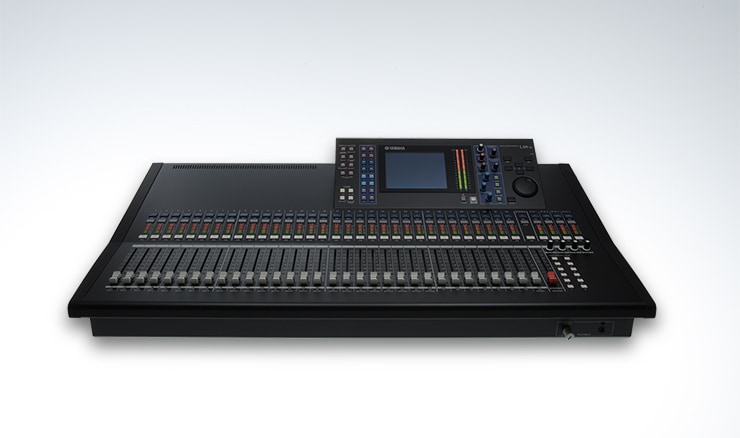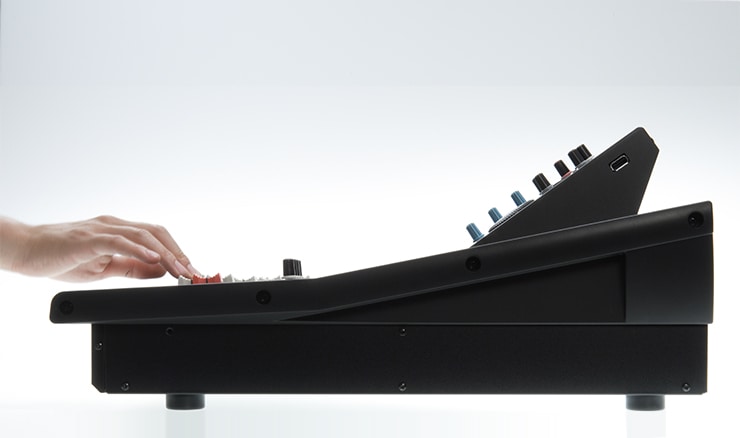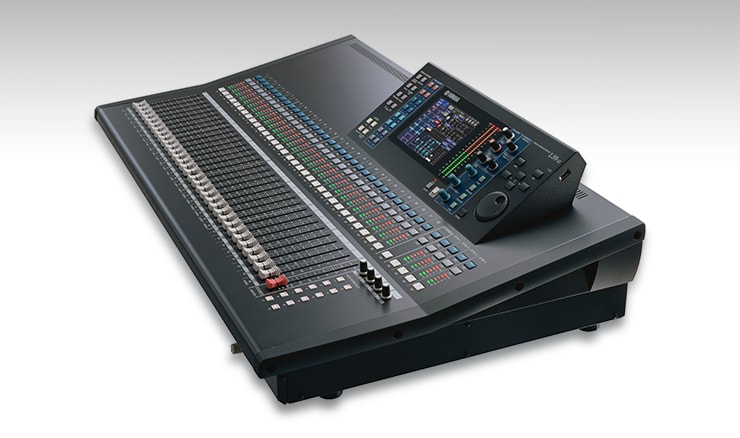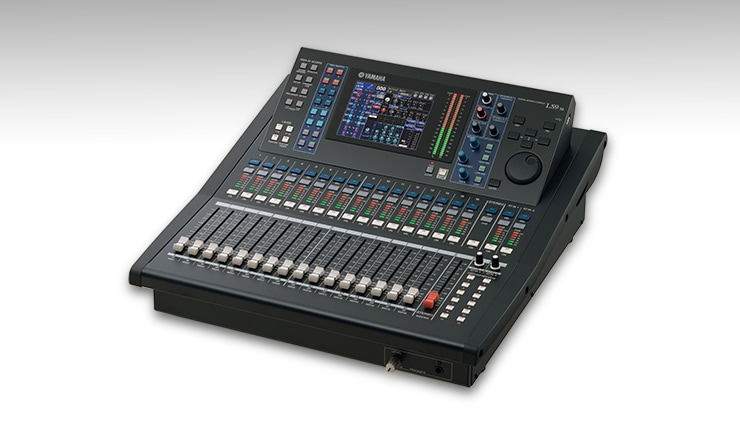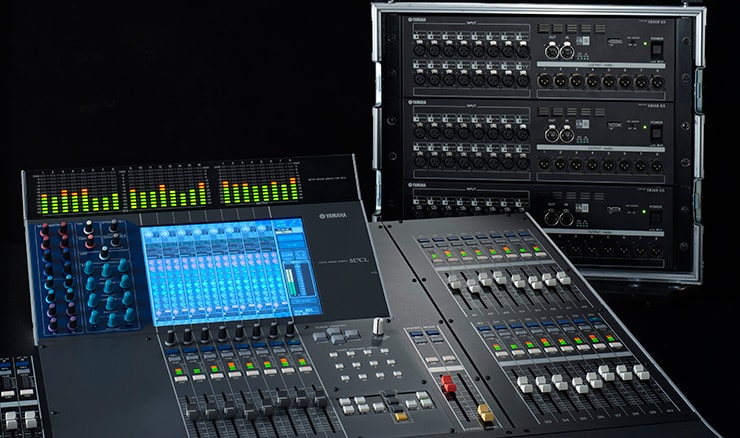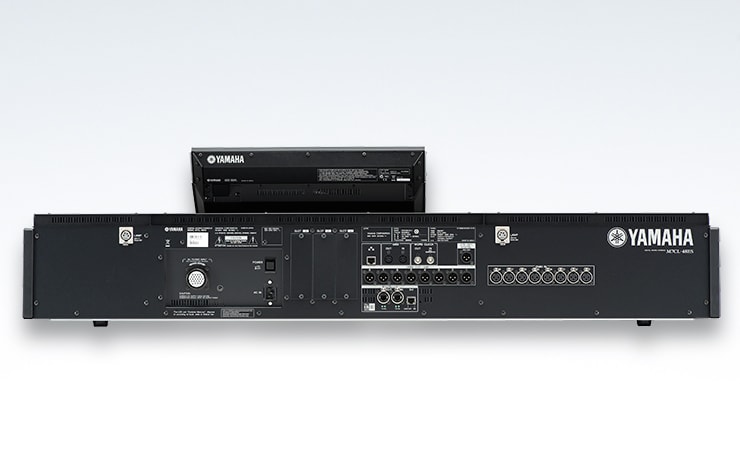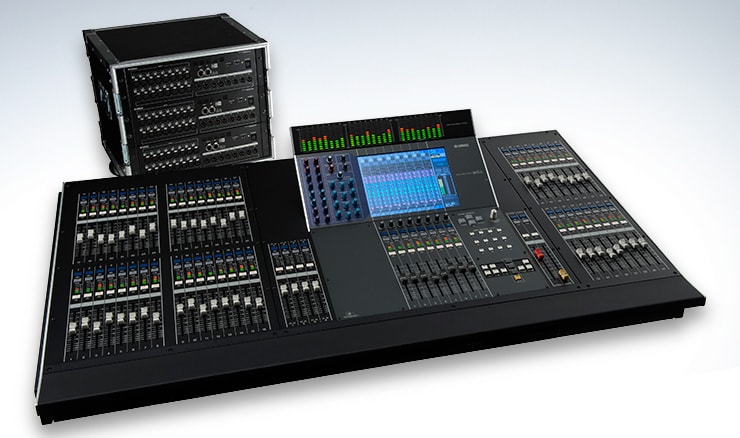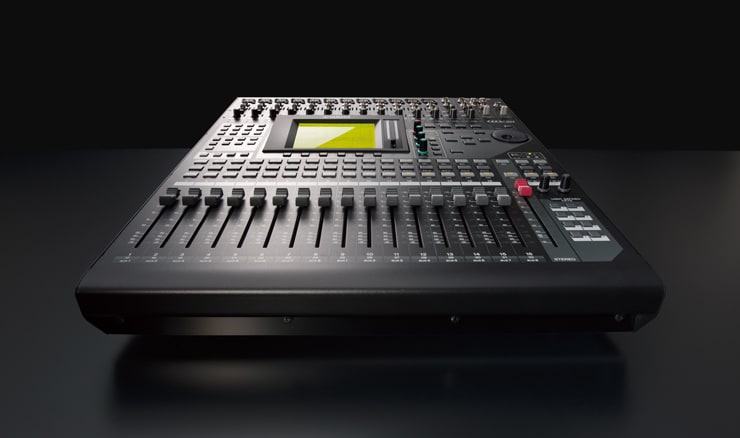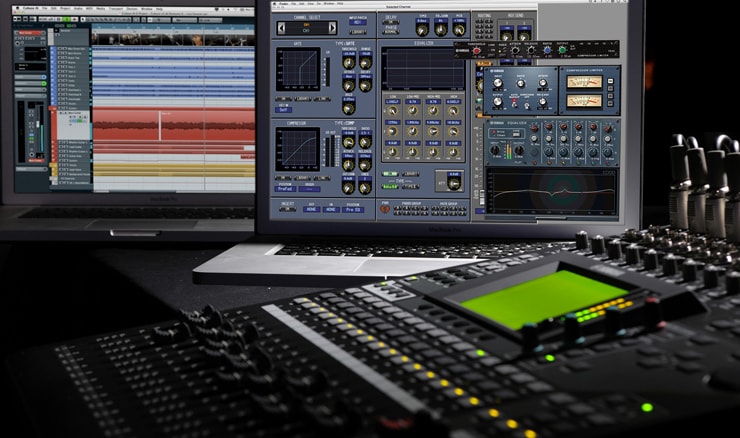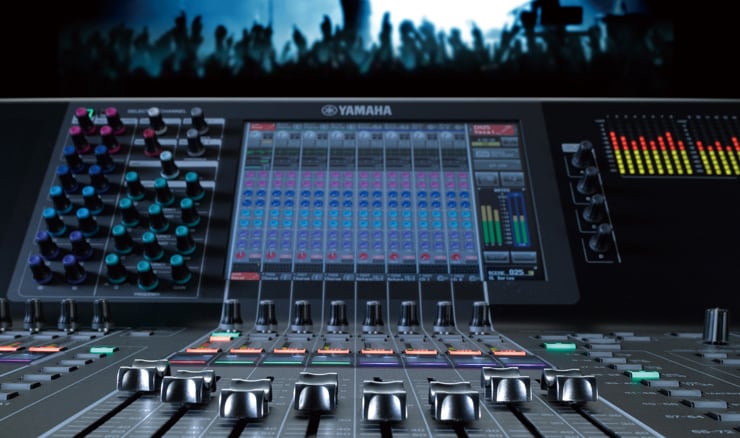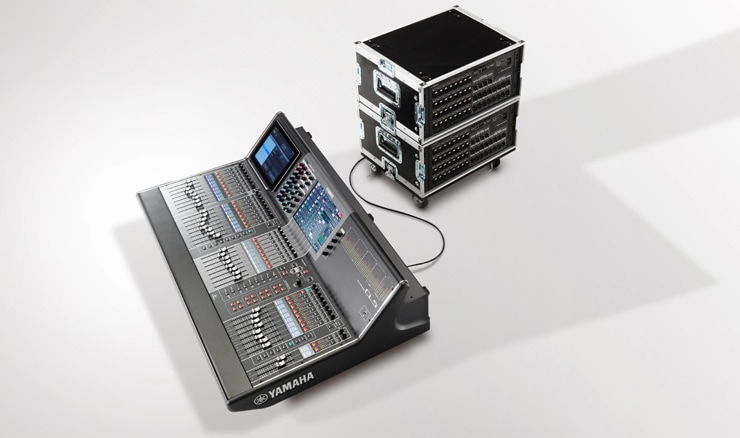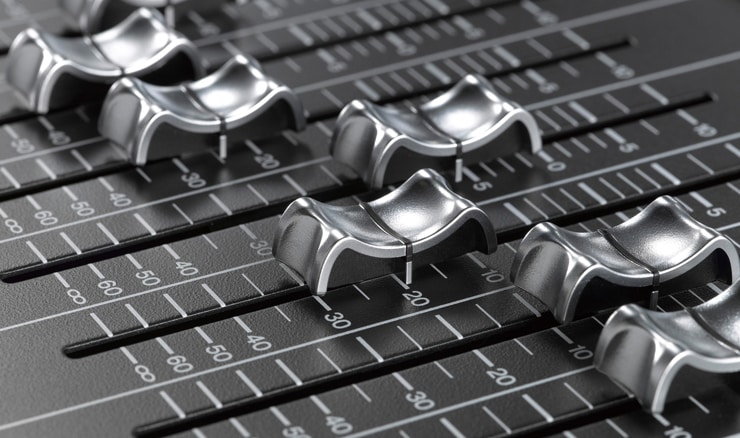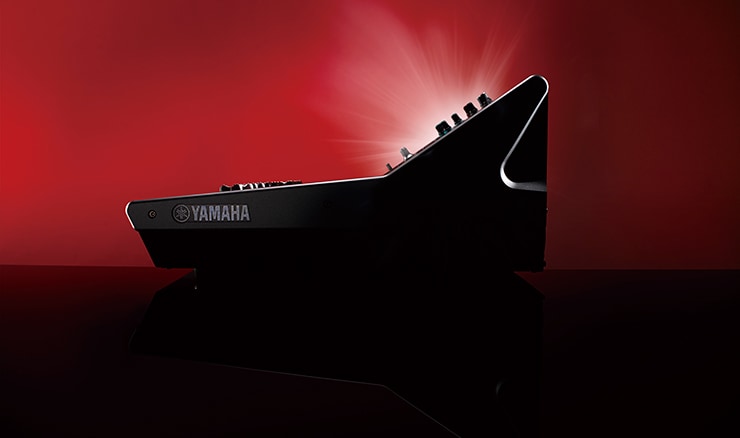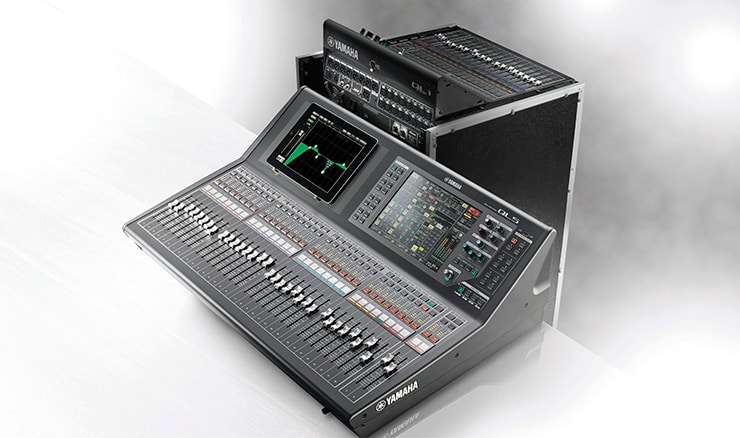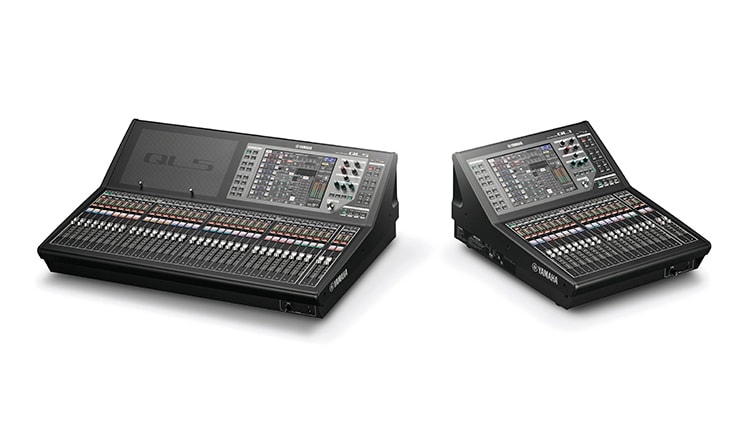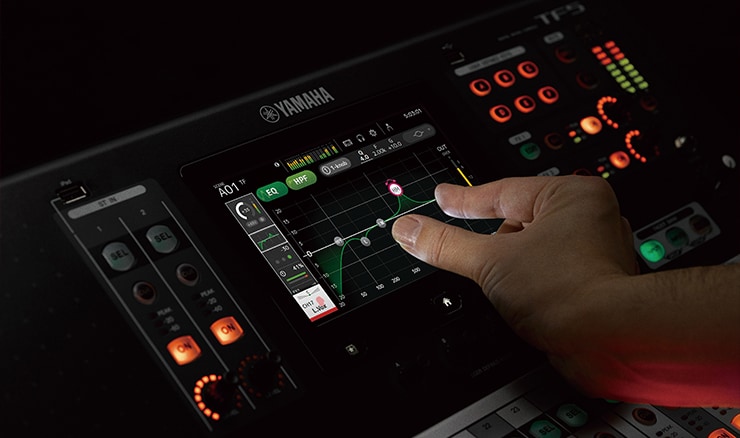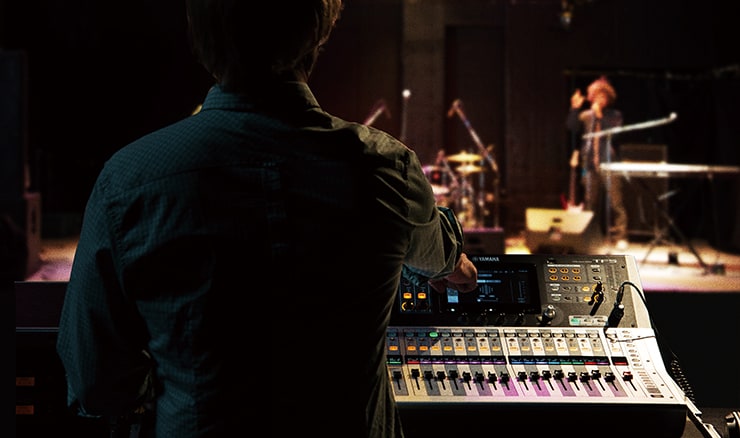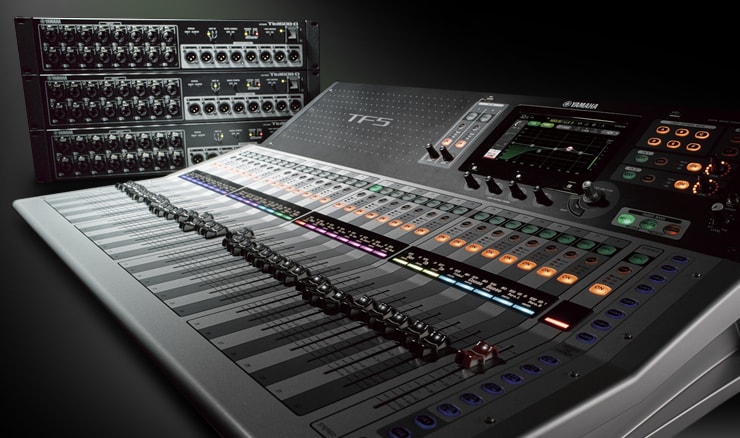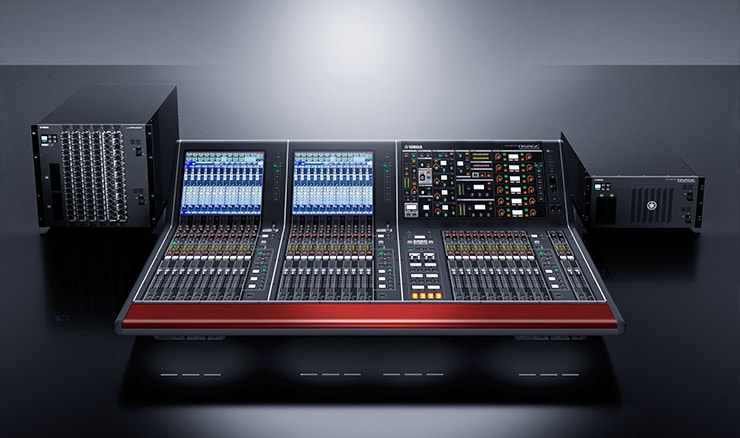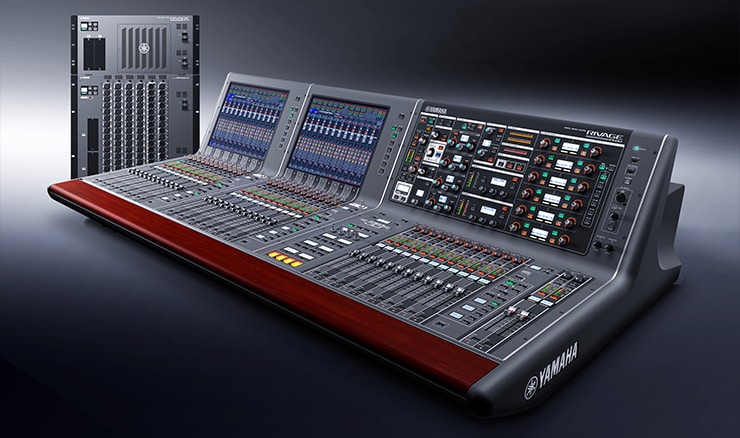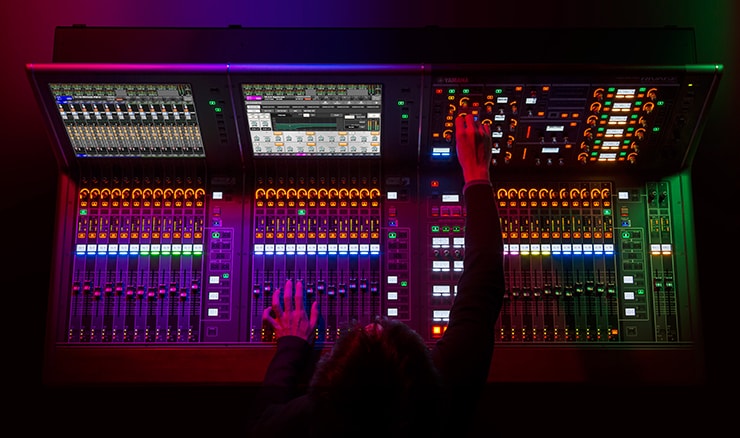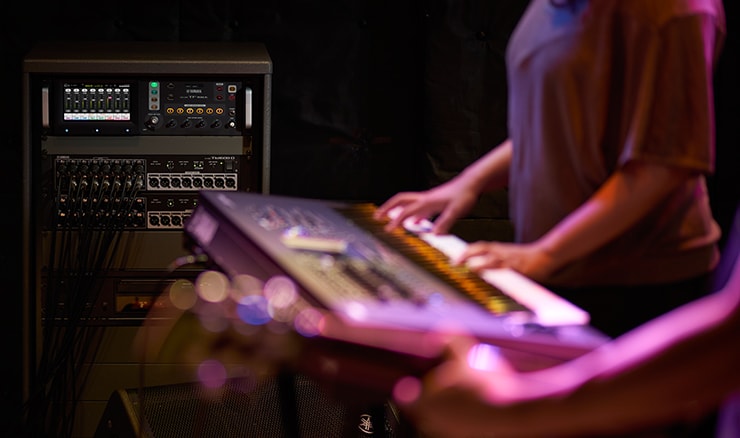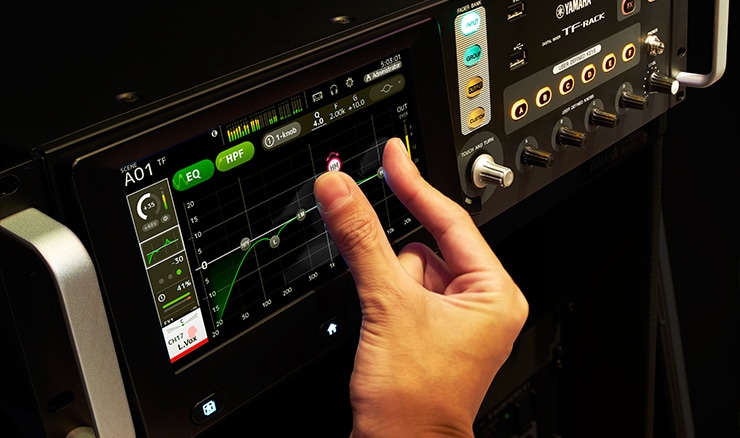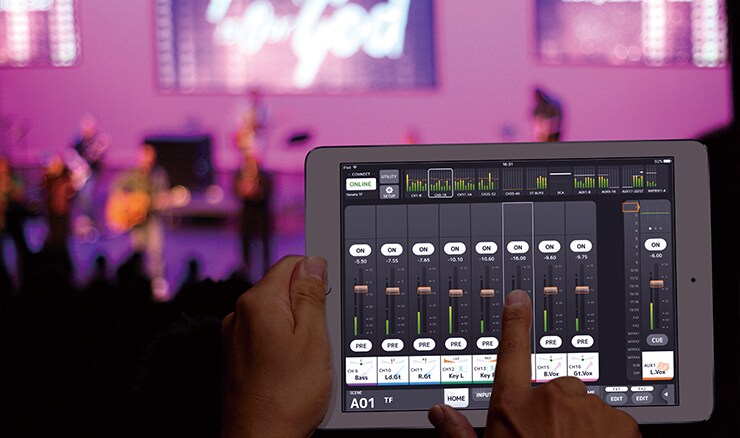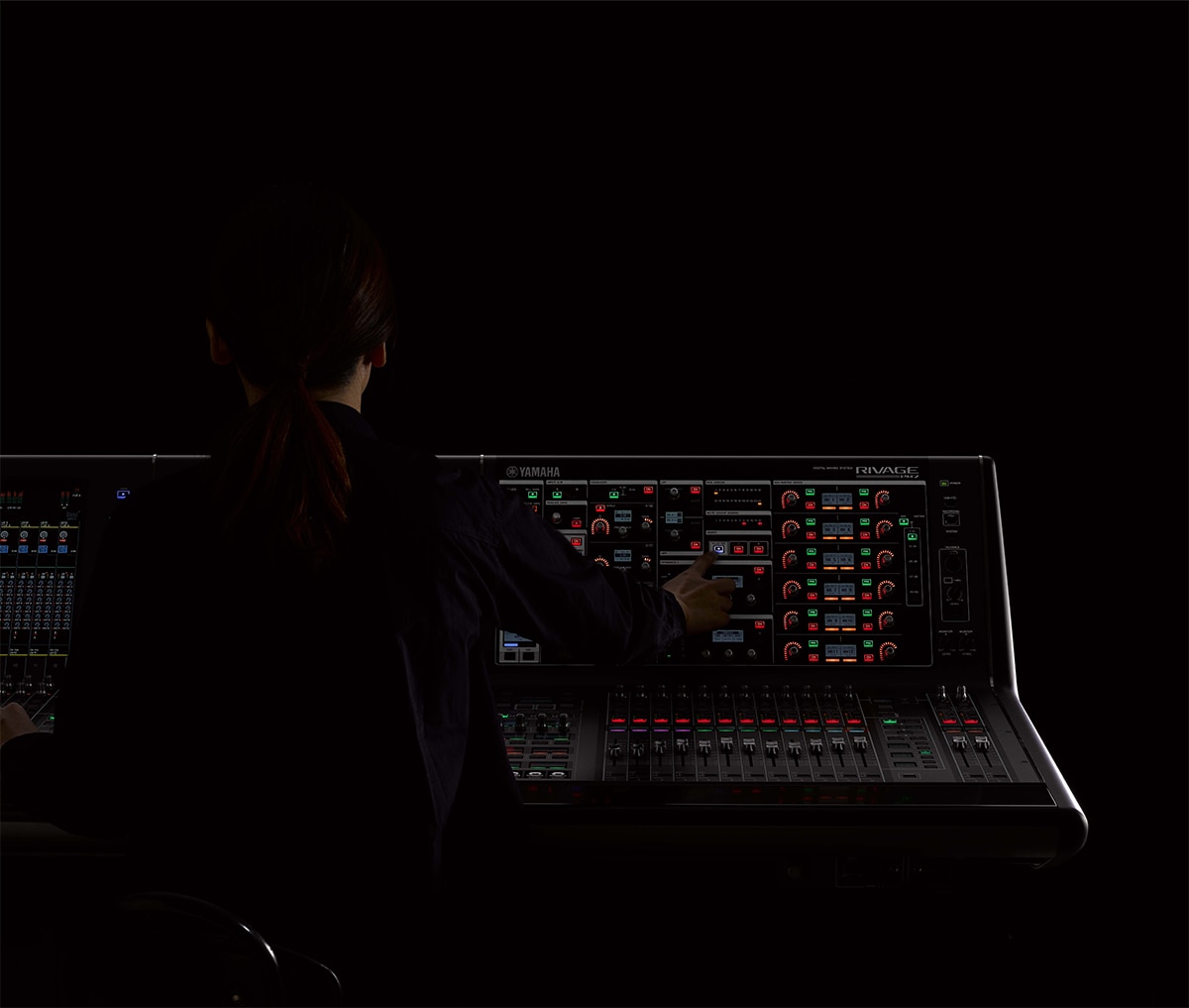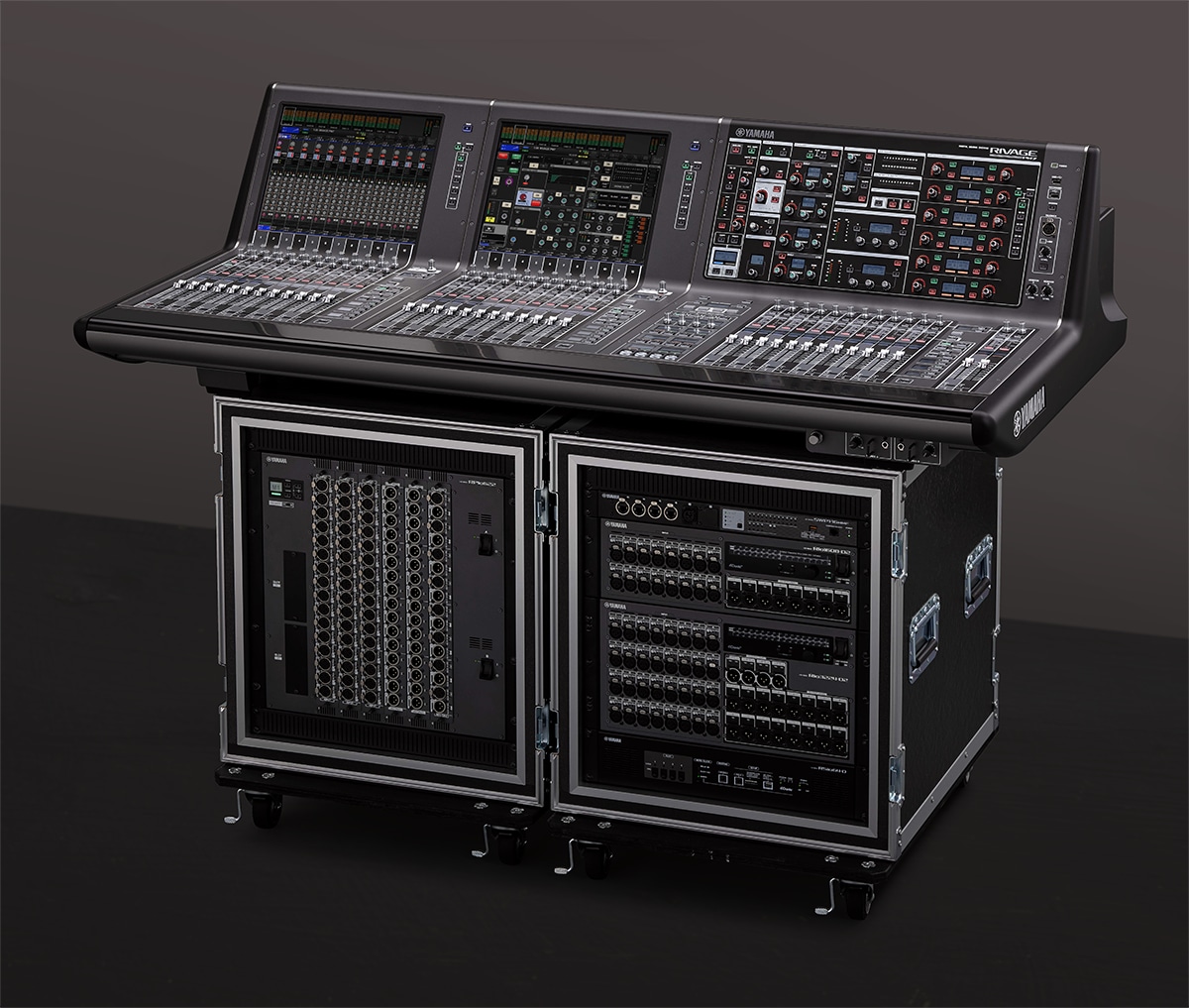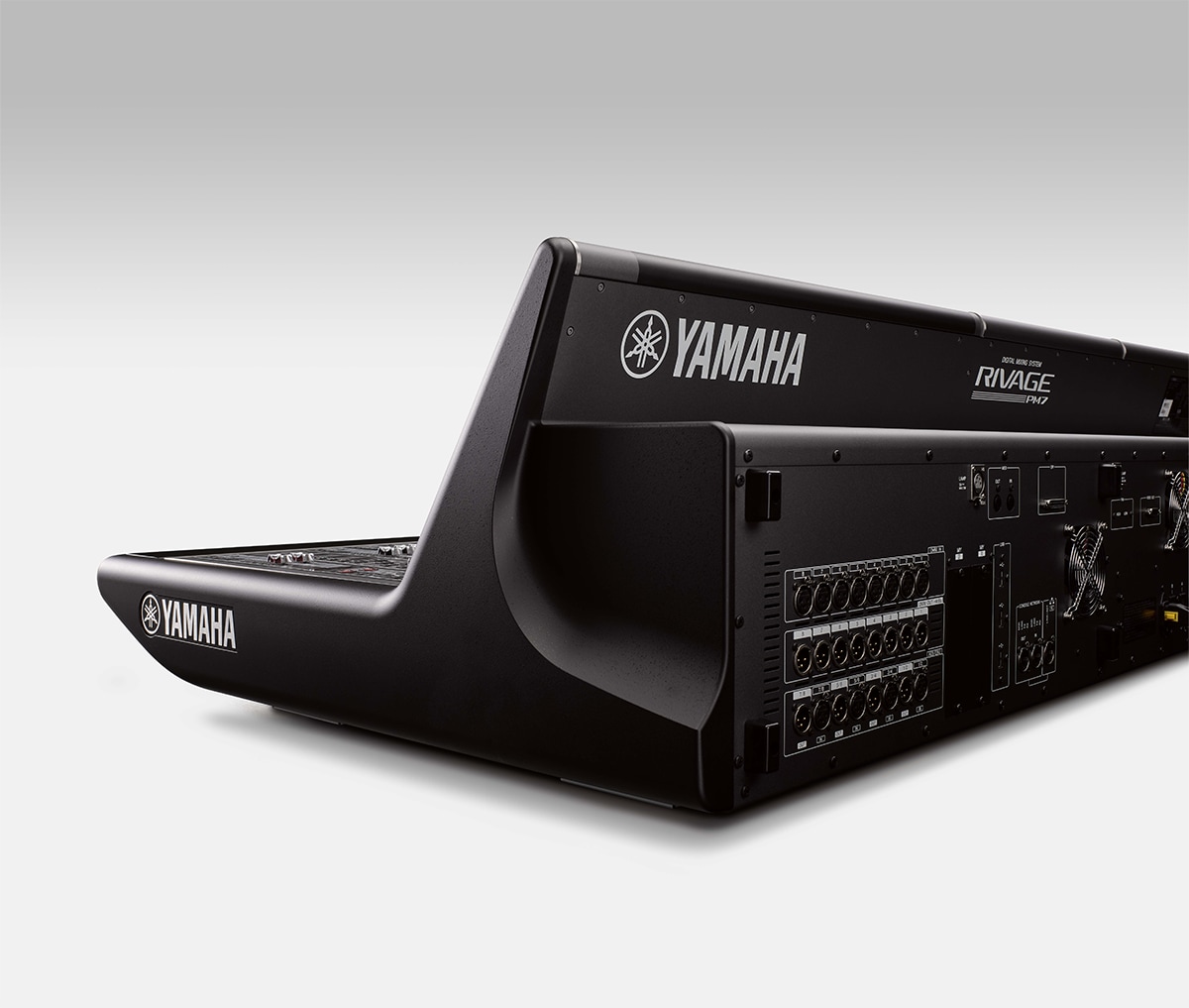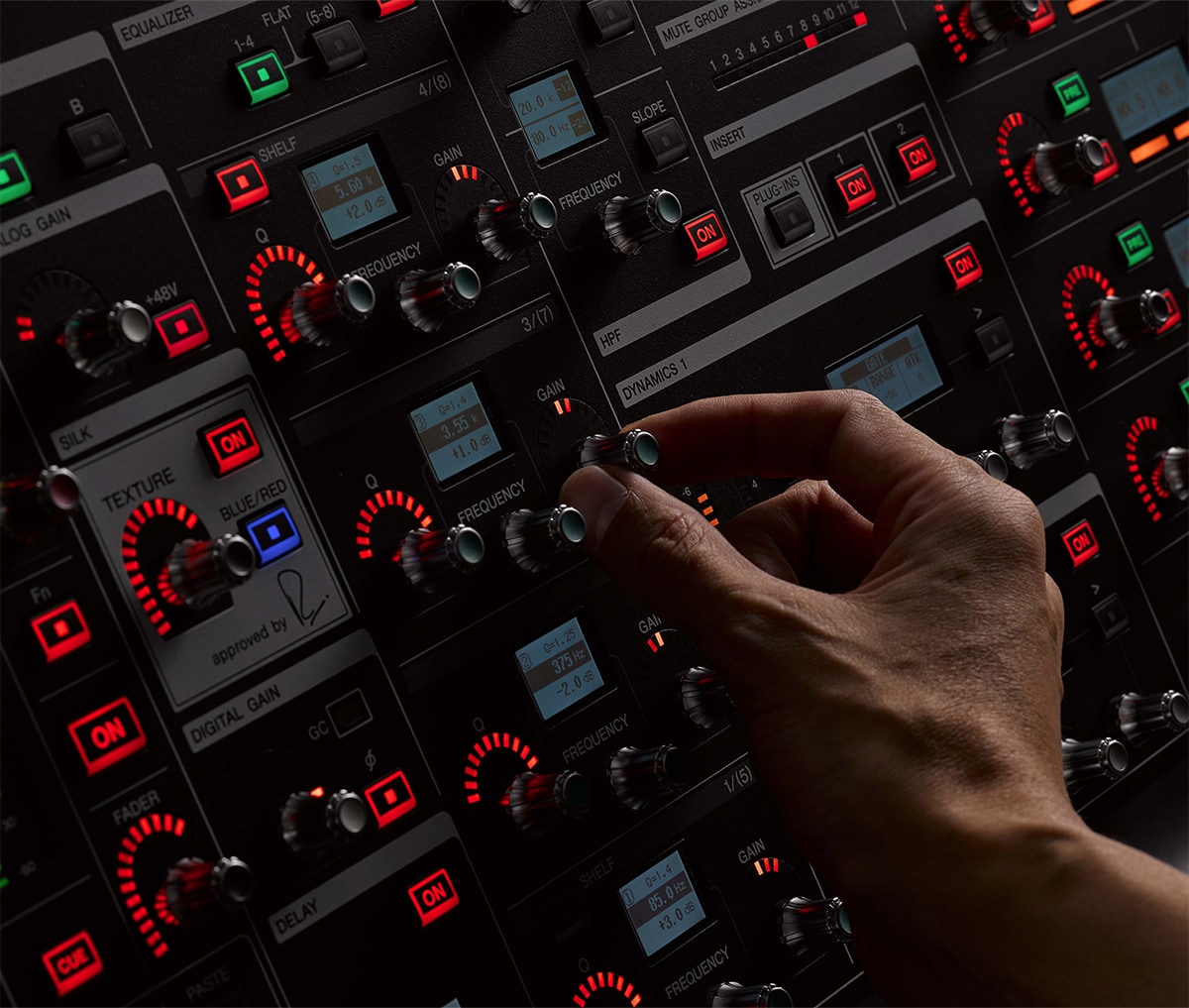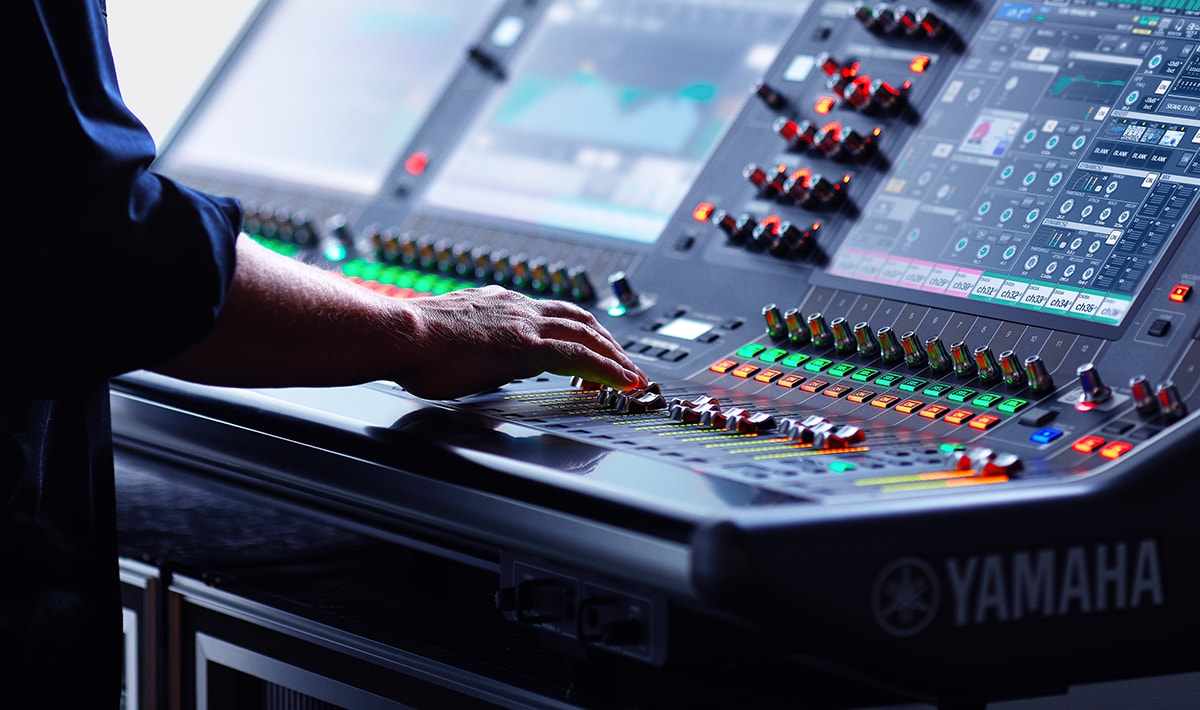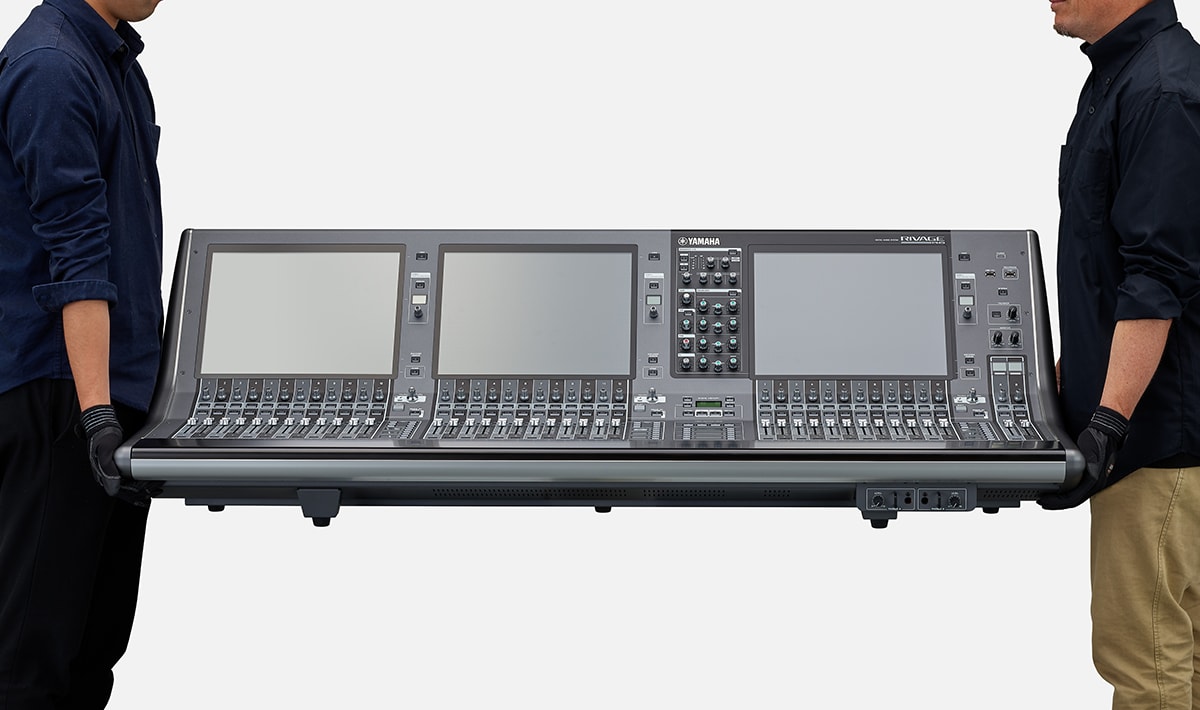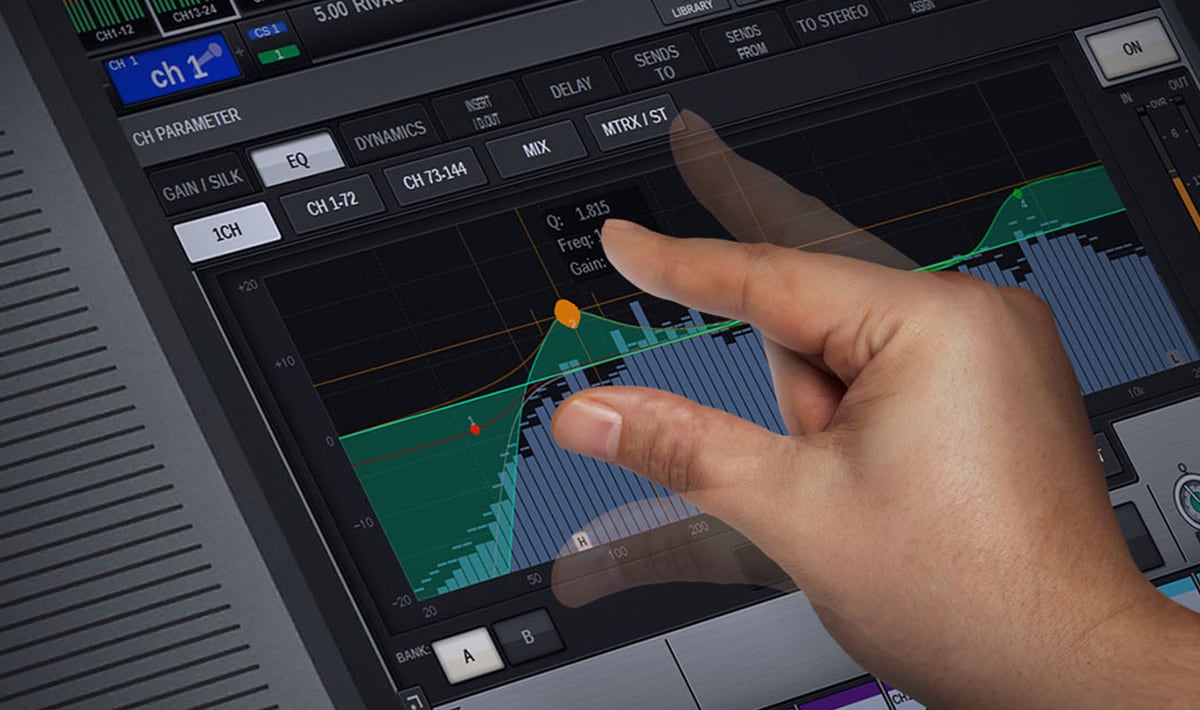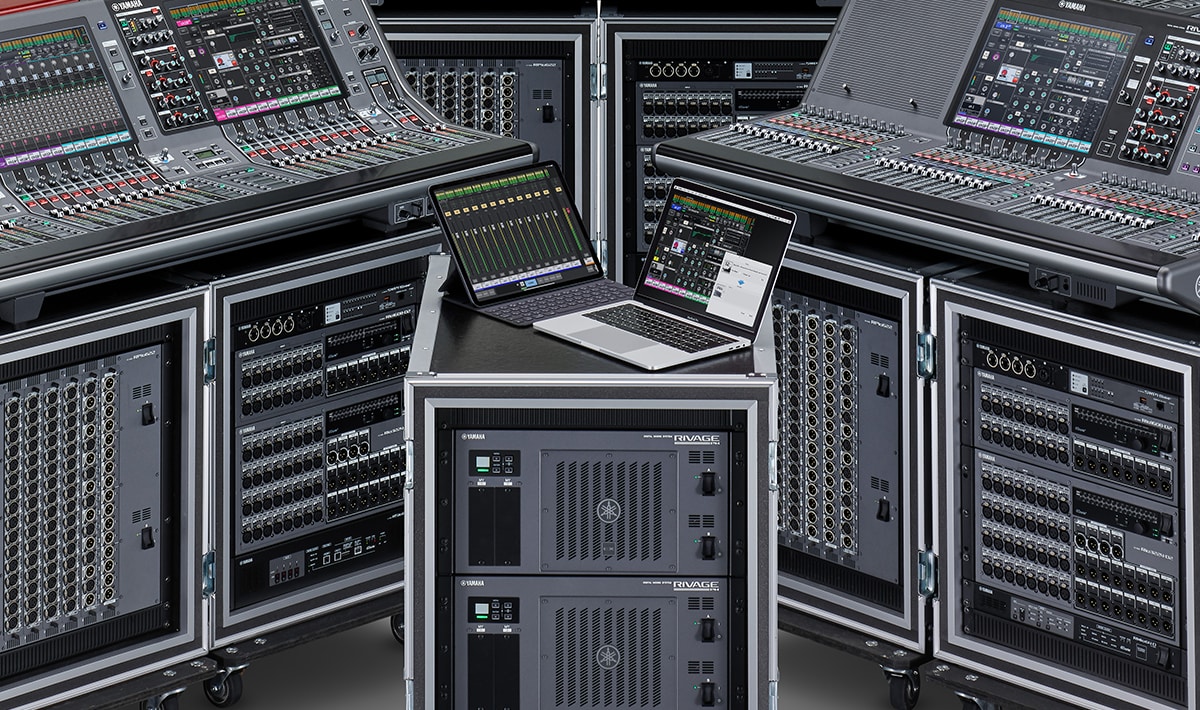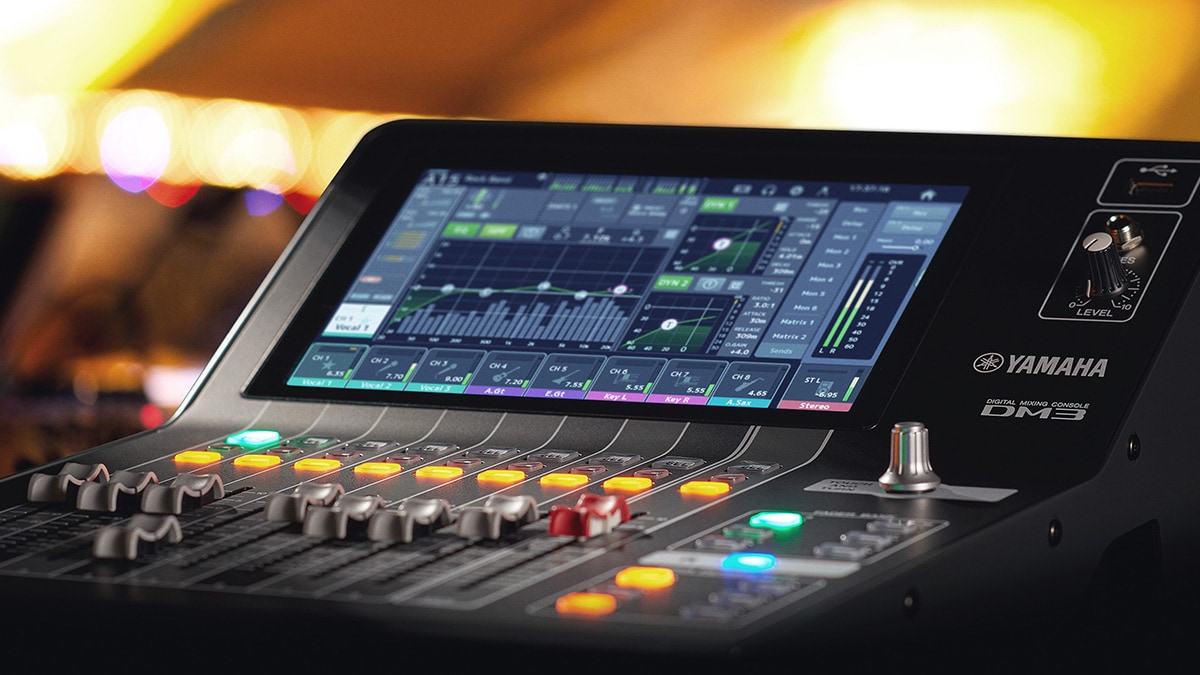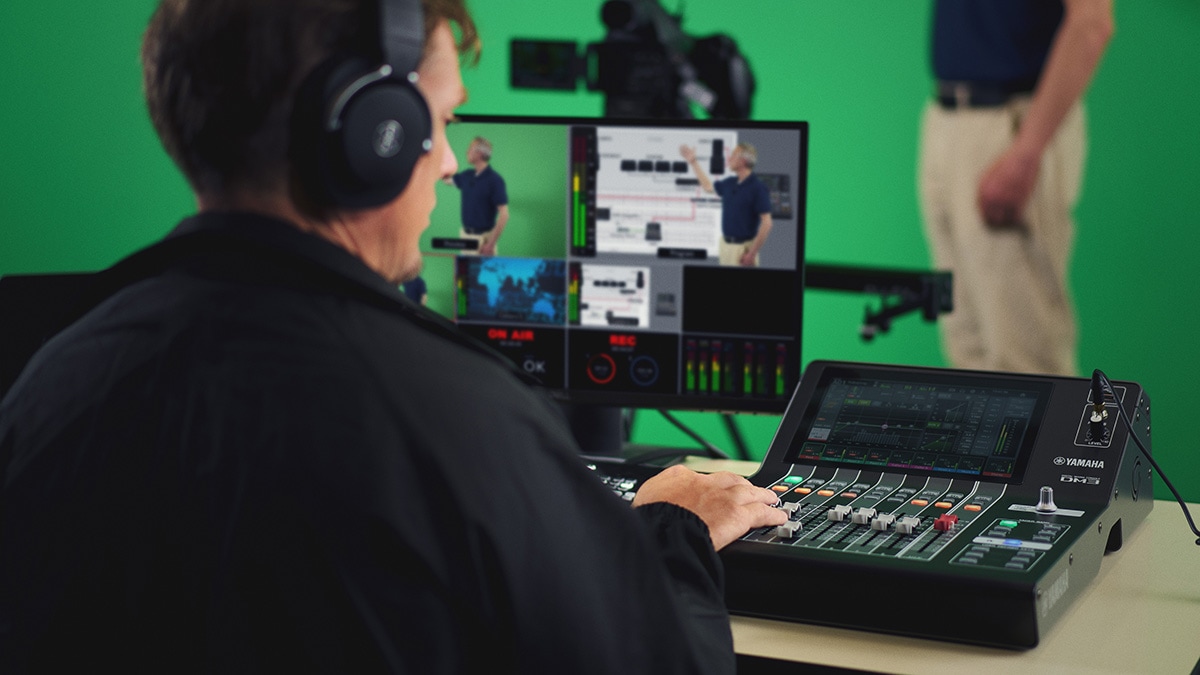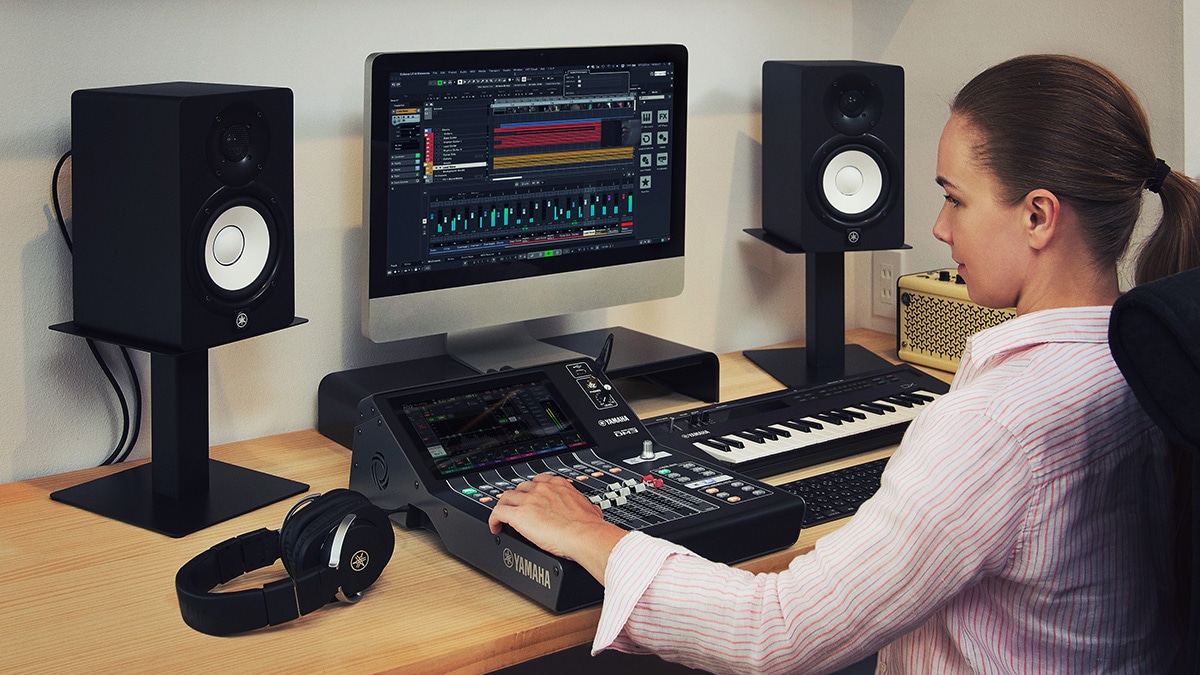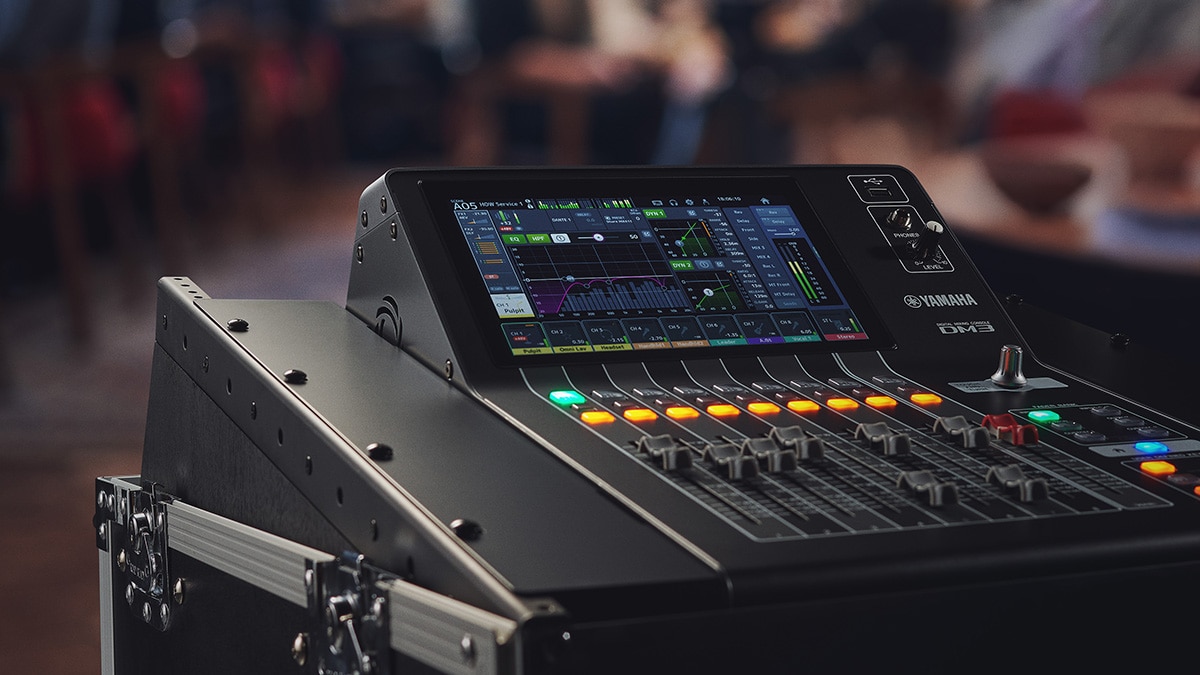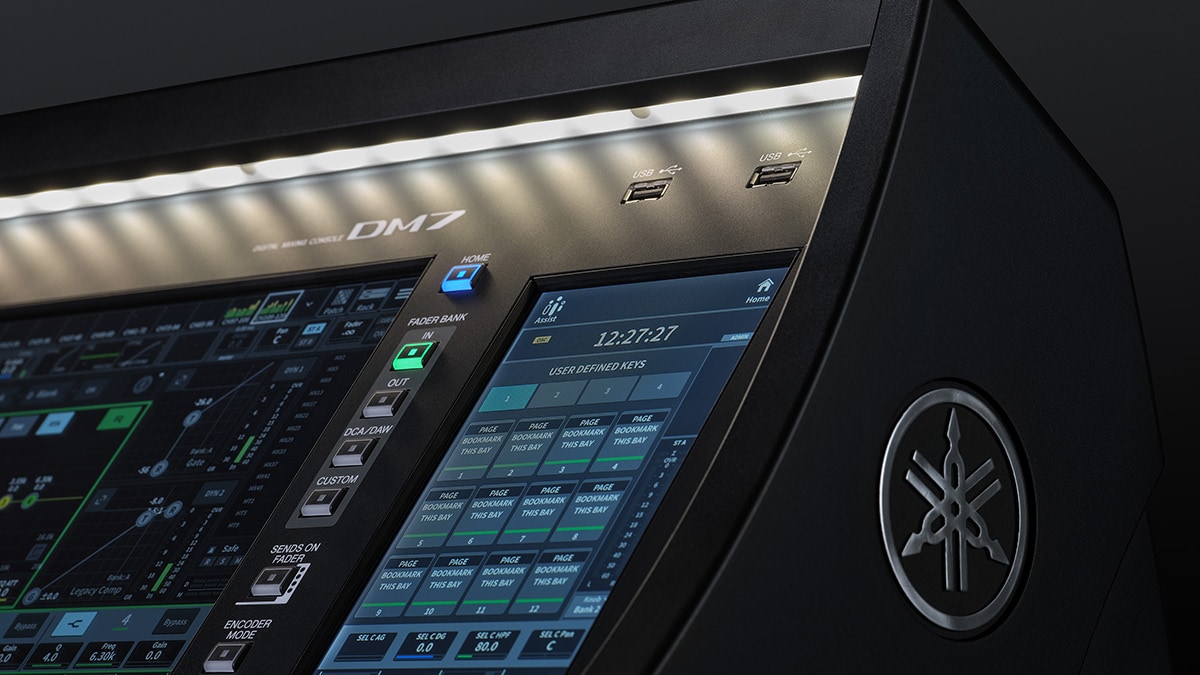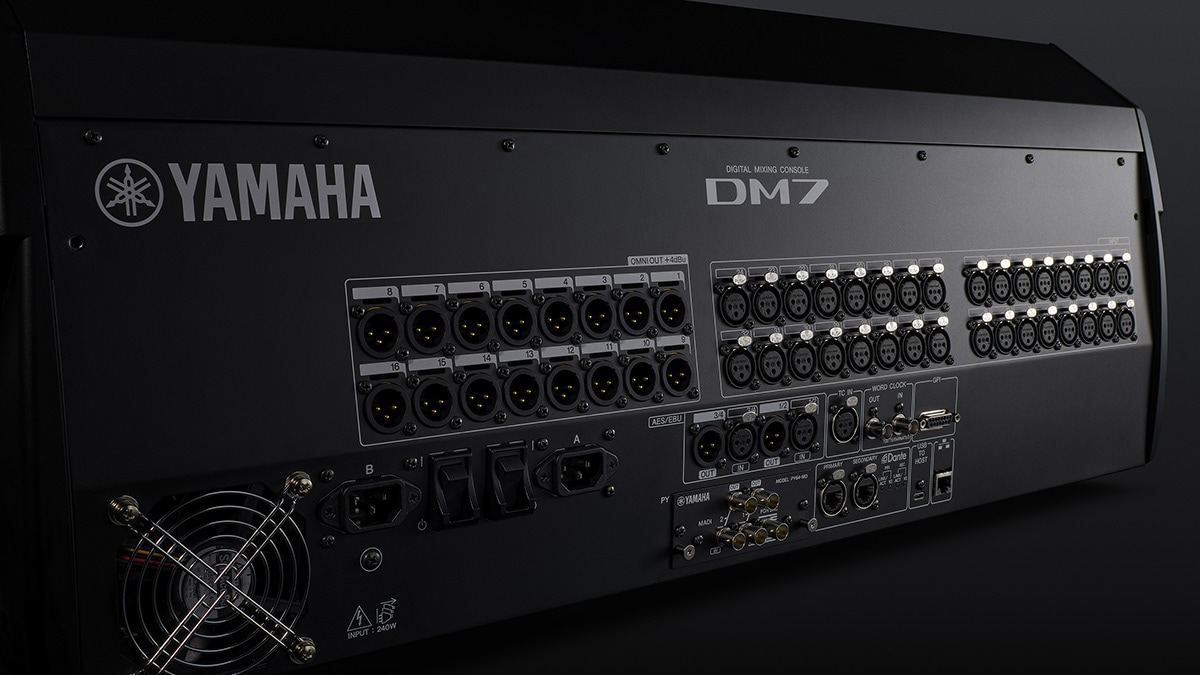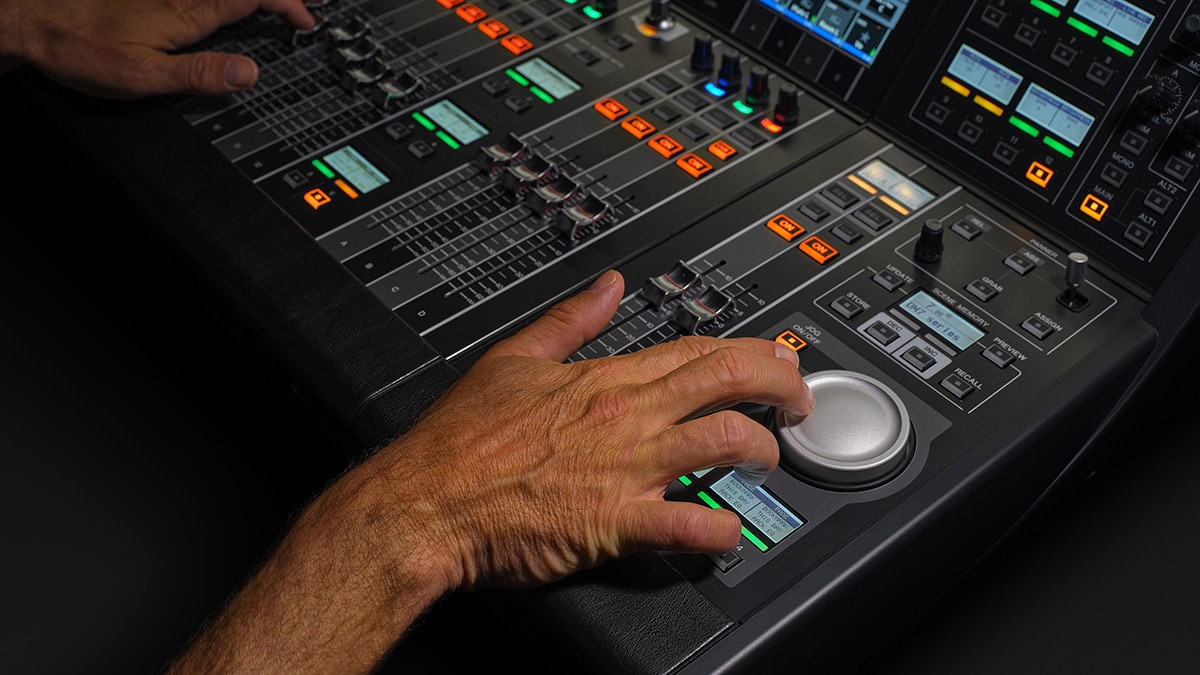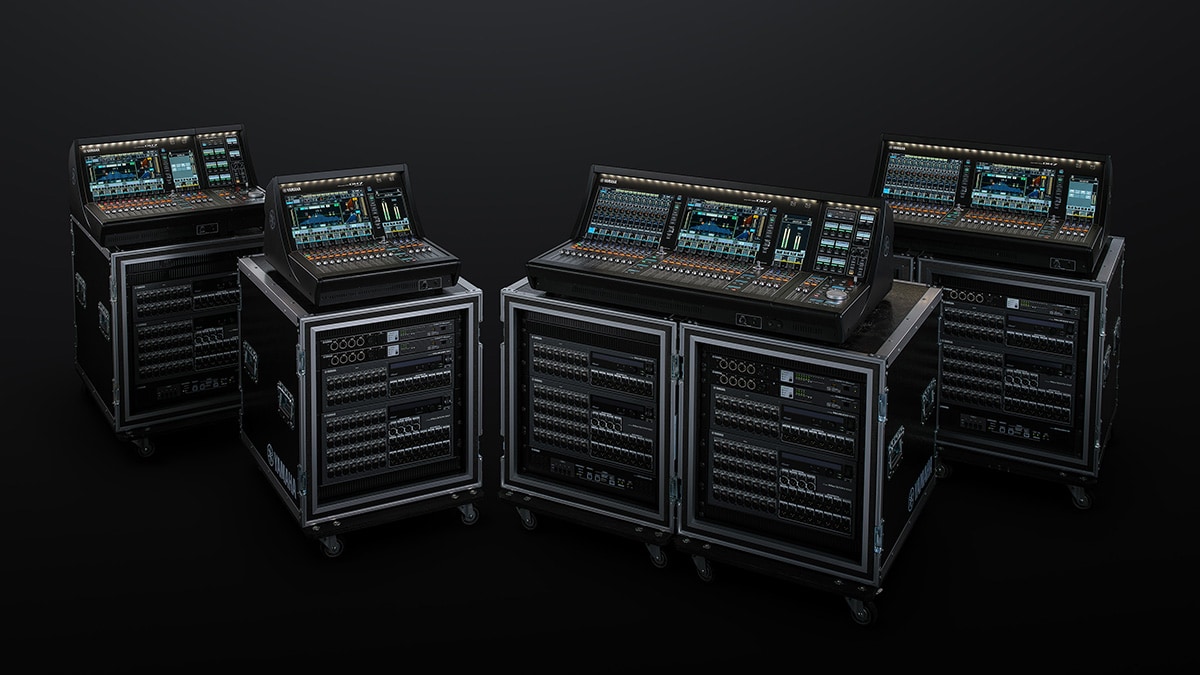-
Digital Mixer History
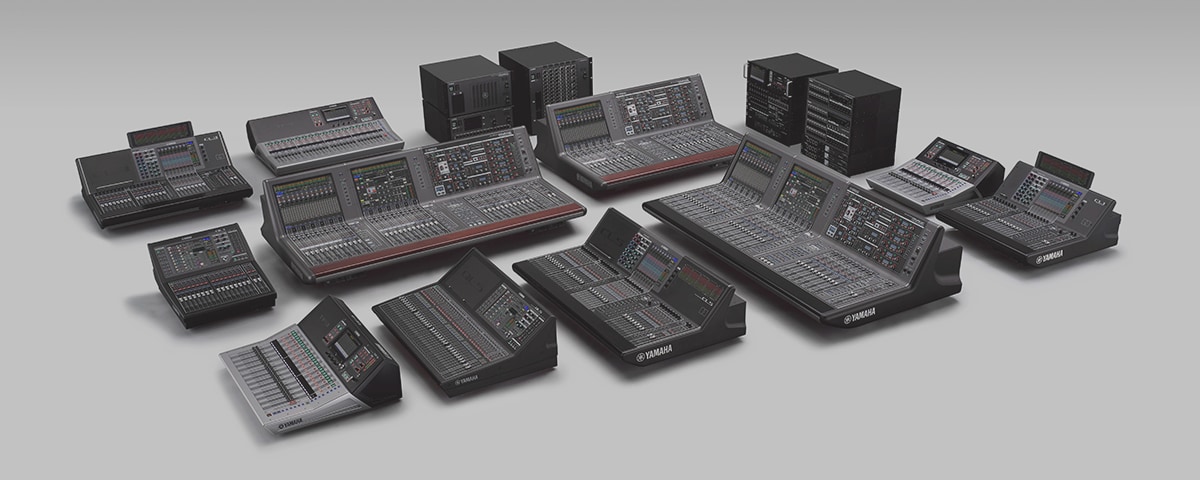
Back when Yamaha products such as the DX7 synthesizer and SPX90 multi-effect unit were at the peak of their popularity, Yamaha was busy developing and manufacturing a DSP LSI that was originally intended for use in Electones, but which also showed promise for digital mixing applications. That LSI provided the basis for Yamaha’s first digital mixer, the DMP7.
1987
-
DMP7
The main target for this digital mixer was keyboard players using the DX7 and other keyboards or tone generators on stage, but since it also featured two built-in microphone inputs plus microphone input expansion capability using the optional MLA7 head amp unit, it found use in some live sound mixing and recording applications as well. And although it was Yamaha’s seminal digital mixer, it featured advanced scene memory that allowed instant recall of a number of different mix setups, plus motor faders that moved with each recall.
1989
-
DMP11
The DMP11 featured the same total recall capability as the DMP7 without motorized faders, making it available at an affordable price. With level bar graphs on the LCD panel and other refinements for easy operation, the DMP11 established the value of digital mixers for keyboard players.
1990
-
DMR8
This was an integrated digital mixer and tape-based digital recorder with 28-bit internal processing and time-code synced automix control of fader, on/off switching, panning, and EQ parameters. In terms of sound quality, features, and expressive capability, the DMR8 was the state of the art at the time. The recorder section was available as a separate DRU8 unit that could be added to a DMR8 for increased track capacity.
1991
-
DMC1000
The DMC1000 was a digital mixer designed to allow direct digital connection to 24 ~ 32 track digital recorders such as the Sony PCM-3324 and Mitsubishi X-850 that were studio standards at the time. This is where the "Selected Channel" concept, allowing parameters of the currently selected channel to be directly accessed via physical controllers on the console's panel, began.
1993
-
DMP9
The DMP9 was the successor to the DMP11, available in two versions with different channel counts: the DMP9-8 and DMP9-16. Two units could be connected to provide systems with 24 or 32 channels. Illuminated switches and knobs with LED surrounds enhanced operability while providing new visual appeal.
1994
-
ProMix 01
The programmable mixer with analog-like operation. The ProMix 01 was rapidly adopted for use as a PA mixer for small events, where it delivered smooth operation and sound quality that rivaled or exceeded that of comparable analog mixers. The fact that the level meters read “nominal” at 0dB and maximum level before clipping was displayed as +15dB also added to this compact console’s analog-like appeal.
1995
-
02R
The 02R was primarily designed as a recording console with an open architecture that allowed AES/EBU, ADAT, Tascam, and other digital formats to be implemented via plug-in I/O cards. With 44-channel mixing capacity with 4-band parametric EQ, dynamics processing, input delays, built-in effects, automix capability, and much more, the 02R became standard equipment in studios throughout the world. It was the 02R, in fact, that first triggered the proliferation of professional-quality project and personal studios that changed the face of music production forever.
1997
-
03D
This console was remarkable in that it packaged the power and performance of the 02R and more into a compact rack-mount mixer. The 03D offered surround panning as a standard feature, and with a software update it could be remotely controlled from ESAM II video editing equipment, making it an in-demand console for post production. The 03D even featured a mouse terminal that allowed a mouse to be used for control.
1998
-
01V
The 01V was introduced as the successor to the ProMix 01. The rear panel featured redesigned Mini-YGDAI format expansion card slots that were even smaller than those introduced on the 02R and 03D. In addition to being an idea companion to digital recorders, the versatile 01V could be paired up with powered speakers to form a compact, high-performance live sound system.
2001
-
PM1D
While the 02R was taking the studio market by storm, Yamaha engineers had begun to direct their efforts towards creating a digital PM-series live sound console. The result was the groundbreaking and history-making PM1D.
The PM1D was the first digital PM-series live sound console, with separate control surface, DSP engine, and I/O components in a system that was both versatile and highly resistant to external noise and interference. The PM1D was designed with plug-in card based analog I/O, and when the refined head amps designed for the analog PM5000 were subsequently made available in card format, the PM1D took another step forward in terms of sound quality. Two DSP engines could be connected in “mirror mode,” and redundant cable connections were accommodated as well, for extremely high reliability. With comprehensive functionality and ample I/O, particularly the 48 mix and 24 matrix output buses, the PM1D was an appealing solution for many demanding high-end applications. The PM1D offered an ideal blend of sonic quality, functionality, operability, and reliability.
2002
-
DM2000
This console offers 96 kHz sampling and 96 channel mixing capability with emphasis on production and surround mixing/monitoring functionality. It also features a 9-pin remote terminal and can remotely control DAW software such as Steinberg Nuendo. The DM2000 accommodates advanced 16-channel Mini-YGDAI expansion cards for virtually unlimited scalability and adaptability. Its compact dimensions and outstanding sound quality have made it a favorite in not only the production field, but in live sound applications as well. In fact, Version 2 introduced a number of features geared specifically towards live sound.
-
02R96
Following in the footsteps of the standard-setting 02R, the 02R96 has continued to redefine music production methodology. The 02R96 was developed in parallel with the DM2000, and includes many of the same advanced digital technologies and features. Although it has the same footprint as the 02R, the 02R96 delivers significantly enhanced audio quality, mixing capacity, and functionality.
2003
-
DM1000
The DM1000 was an impressive achievement in that it offered 48-channel input capacity in a compact rack-mountable console. The later Version 2 revived ESAM II remote control for video editing equipment for the first time since the 03D. This all-around console has been adopted for a wide range of applications, from production to broadcast to live sound. It offers everything the demanding user expects of a digital console: outstanding operability, expandability, and flexibility in a compact and powerful console.
-
01V96
The 01V was prized in a variety of applications, from professional production to private studios to live sound. The 01V96 took that versatility to a new level. 96kHz sampling, 100mm motor faders, surround mixing, and DAW control were just a few of the features that made this console a standout in the entry-level category.
2004
-
PM5D
The PM5D was created in response to user demand for a console that was somewhere between the PM1D, which was simply too much console for many smaller applications, and the DM2000 that was being used in situations that didn’t require the capabilities of the PM1D. The PM5D offered the outstanding sound quality of the PM1D, but with half the channel capacity (the “5” in the product name actually represents “0.5”). Features like a full complement of analog inputs on the rear panel, plenty of space to apply a fader scribble strip, and other refinements made it easy for analog users to cross over into the world of high-performance digital mixing.
2005
-
M7CL
Development of the M7CL began with the question: "are analog mixers really ideal when it comes to ease of use?" The adoption of a touch screen for control while eliminating the cursor keys, dial, and enter keys that had previously been used on Yamaha digital consoles proved that digital mixers could be just as easy, if not easier to operate. Furthermore, all primary control functions were concentrated into just two display pages. It was also the M7CL that introduced the Centralogic™ concept for the first time, allowing direct hands-on control of all channels from the console’s center position.
2006
-
LS9
The LS9, targeted at the club and "live house" market, was born through a fusion of the concepts developed for the M7CL and the full force of Yamaha digital technology and know-how. It provided all essential functions of a live sound system in a digital package that was small and light enough for a single operator to transport and use anywhere. It was, quite simply, a comprehensive digital solution for live sound. Two models are available: the rack-mountable LS9-16, and the larger LS9-32.
2010
-
M7CL-48ES
This variation added a digital stage box solution to the groundbreaking M7CL that was originally intended to directly replace analog mixers in existing systems. Up to three SB168-ES stage boxes can be connected to the console’s built-in EtherSound ports, providing a simple way to achieve degradation-free signal transmission plus stage box versatility. It was also in 2010 that the M7CL StageMix application for the iPad was released, allowing fast, efficient system setup while monitoring the results from the performers’ positions on stage or audience seating.
2011
-
01V96i
The 01V96i is basically an 01V96 outfitted with the very latest technology, multitrack recording capability, advanced VCM effects, and a refined high-performance head amp section, to meet the needs of today's demanding live sound applications. A USB connector supports 16-channel audio input and output, and can be directly connected to a computer running Steinberg Cubase AI6 or similar DAW software to allow multitrack recording via a single cable.
2012
-
CL Series
The demands and expectations directed at the mixing console, the core of any live sound system, are vast and varied. The ideal console must deliver reproduction performance and sound-shaping features that can satisfy an overwhelming variety of artists and engineers, while simultaneously being able to adapt to the needs of the moment in any environment with versatile operability. And of course it must be able to integrate smoothly into a wide range of systems. The CL series consoles come as close as possible to the ideal using the most advanced technology available at this time.
2014
-
QL Series
The acclaimed CL series raised live digital mixing console performance to an unprecedented level of refinement with evolved sound quality, operability, and functionality. Core features and performance inherited directly from the CL series, including natural sound supported by sonically superb internal processing capabilities, operation that easily adapts to the demands of just about any working environment, and built-in Dante networking that facilitates flexible system configuration, have now been condensed and concentrated into the compact QL series digital mixing consoles. QL series consoles offer all-in-one mixing, processing, and routing capability for small to medium scale live sound, corporate speech events, installations, and much more.
2015
-
TF Series
With the TouchFlow Operation interface optimized for touch panel control, experienced engineers as well as newcomers to the field will find it easier than ever to achieve the ideal mix. Recallable D-PRE™ preamplifiers support sound quality that will satisfy the most discerning professional ears, while advanced live recording features and seamless operation with high-performance I/O racks give these compact digital mixers capabilities that make them outstanding choices for a wide range of applications. Experience the intuitive control and creative freedom that a truly evolved digital console can provide.
-
RIVAGE PM10
In the more than 40 years that have passed since Yamaha's first professional live sound console was released, the PM series has been responsible for a number of important milestones in the history of sound reinforcement. Many of those innovations have become standard tools that professionals depend on to this day. A new generation of PM consoles, the RIVAGE PM10 is here. In terms of sound quality, operation, functionality, reliability, expandability, and more, the RIVAGE PM10 is a thoroughly refined flagship that defines the direction for future generations. It is a worthy heir to the PM name that brings true innovation to the evolving live sound scene.
2016
-
TF-RACK
TF-RACK offers all-in-one mixing and processing capability for small to medium scale live sound, corporate speech events, installations and much more. It packs intuitive user interface, natural control flow, digital effects/processing units and many shortcuts to great sound into a compact, portable rack-style unit. This space-saving model is accessible to a wide range of users, from beginners to seasoned engineers. The TF-RACK is an unbeatable choice when smooth, intuitive setup and operation is required in limited spaces.
2018
-
RIVAGE PM7
The PM series has provided fertile ground from which numerous sound reinforcement milestones have grown ever since. Many of those innovations have become benchmarks that professionals depend on to this day. The RIVAGE PM7, which is located directly below the new generation flagship RIVAGE PM10, has already become standards in large-scale live sound applications because of their unequalled sound, operation, functionality, reliability, expandability, and more. The Yamaha “PM brand” continues to bring true innovation to the developing live sound scene.
2020
-
RIVAGE PM5/RIVAGE PM3
The Yamaha RIVAGE PM series is highly regarded for its outstanding sonic quality and flexible control, and RIVAGE PM5 and PM3 system gives sound engineers greater choice and flexibility to deliver optimum sound in a wider range of applications. All RIVAGE PM systems use the same DSP engines, the same I/O racks, and the same firmware. That means whichever control surface is used, sound, features, and basic operation remain consistent. The system’s Dual Console function makes it possible to use a second control surface as a sidecar. Any control surface can be used for FOH one day, as a monitor console the next, and then as a sidecar as the need arises. All models feature the same basic fader configuration with up to three bays of 12 faders, so that the same fader layout can be maintained when using different control surfaces on different days of a tour, for example.
2023
-
DM3 Series
The word “compact” is often associated with limitations, and in the sound reinforcement world, often implies compromises in functionality, connectivity, or sound quality, and sometimes all three.
Until now choosing a compact console has almost invariably been a matter of what you’re willing to sacrifice to get the capabilities you need in the space you have.
The DM3 series of mixing consoles shatters this stereotype, offering superb sound quality, fast and easy setup and operation, and professional-level features for live sound, streaming, and live or home recording and music production—a combination unmatched in any other mixing console this size.
-
DM7 Series
DM7 series mixing consoles represent a sizable step forward in this evolution of form, functionality, and flexibility with their intuitive UI, compact design, and comprehensive suite of powerful features that allow them to outperform other mixers in their class in an impressive range of audio environments.
From broadcasting, streaming, and music production, to live hybrid events and concert performances, the advanced capabilities of the DM7 series set a new standard in operability and workflow while simultaneously staying true to Yamaha’s sonic tradition of “natural sound”

